On the Trail of Vietnam War Heritage in Ho Chi Minh City (Saigon) – Secret weapons hiding places, museums, hotels and significant buildings
30th April 2015 saw the 40th anniversary of the Fall of Saigon, a critical moment in history that ultimately led to the end of the War in Vietnam (or the American War as it is known in Vietnam). Although there are several significant Vietnam War sites in Ho Chi Minh, should you give any guidebook a cursory glance, there are only two obvious reminders of that dark time in the city: Reunification Palace, which played a critical role in the Fall of Saigon (see below), and the War Remnants Museum which houses memorabilia and artefacts related to that period. But in fact, when you delve deeper, there are actually quite a few buildings and locations associated with the war and what’s more, most of them are in the city’s downtown area of District 1 and neighbouring District 3 which means that seeing them all in a relatively short space of time on foot is quite feasible.
What follows is a short description of the Vietnam War sites we discovered during our two months of living in Saigon.
A map of Vietnam War Sites in Saigon
MUSEUMS
Reunification Palace
Bordering District 1 and District 3, this disharmonious building, also called Independence Palace, was the home and workplace of the president of South Vietnam during the war. One of the key Vietnam War sites in Ho Chi Minh City, it was here, on 30th April 1975, that the first communist tanks arrived in Saigon, crashing through the wrought-iron gates and assuring the palace’s place in modern history.
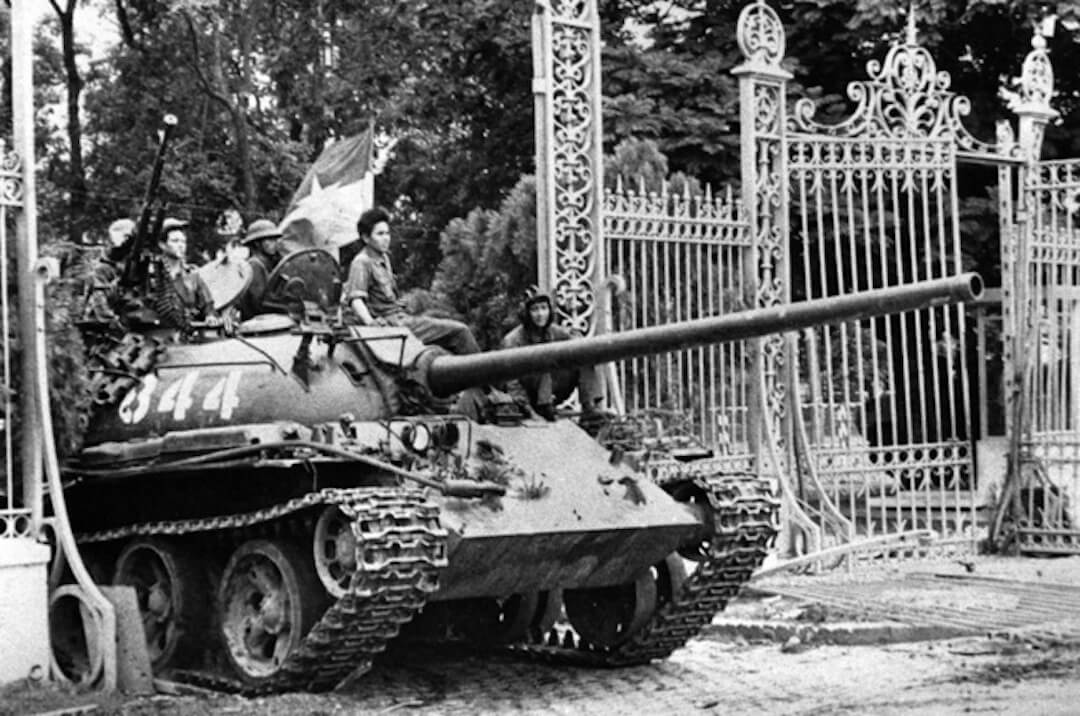
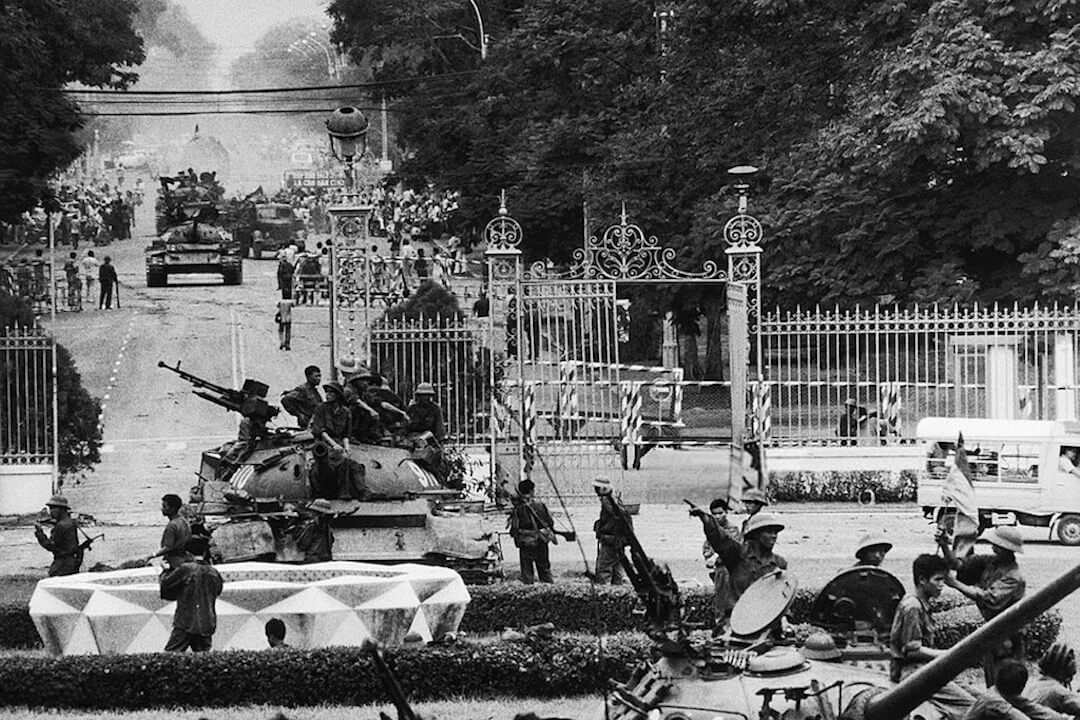
North Vietnamese tanks arriving at Reunification Palace on 30th April 1975
Full of very kitsch meeting rooms complete with rows of pastel-coloured telephones, reception chambers and living quarters, the palace is a classic example of 1960s’ architecture and well worth a visit, regardless of whether you have a particular interest in the Vietnam War or not.
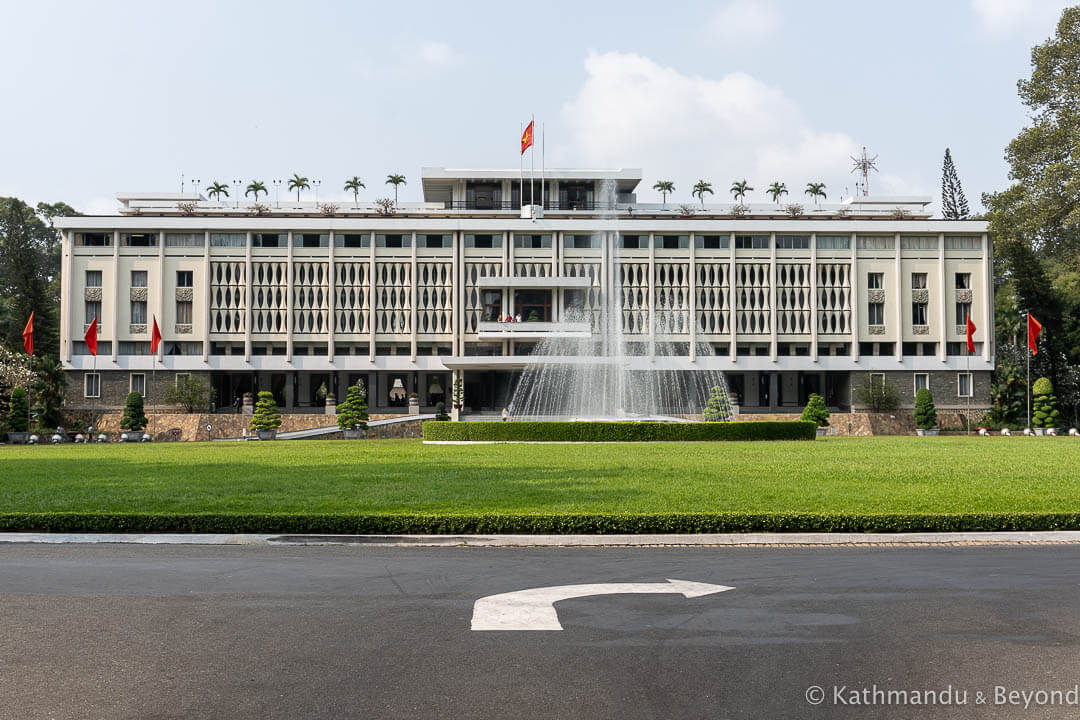
Reunification Palace
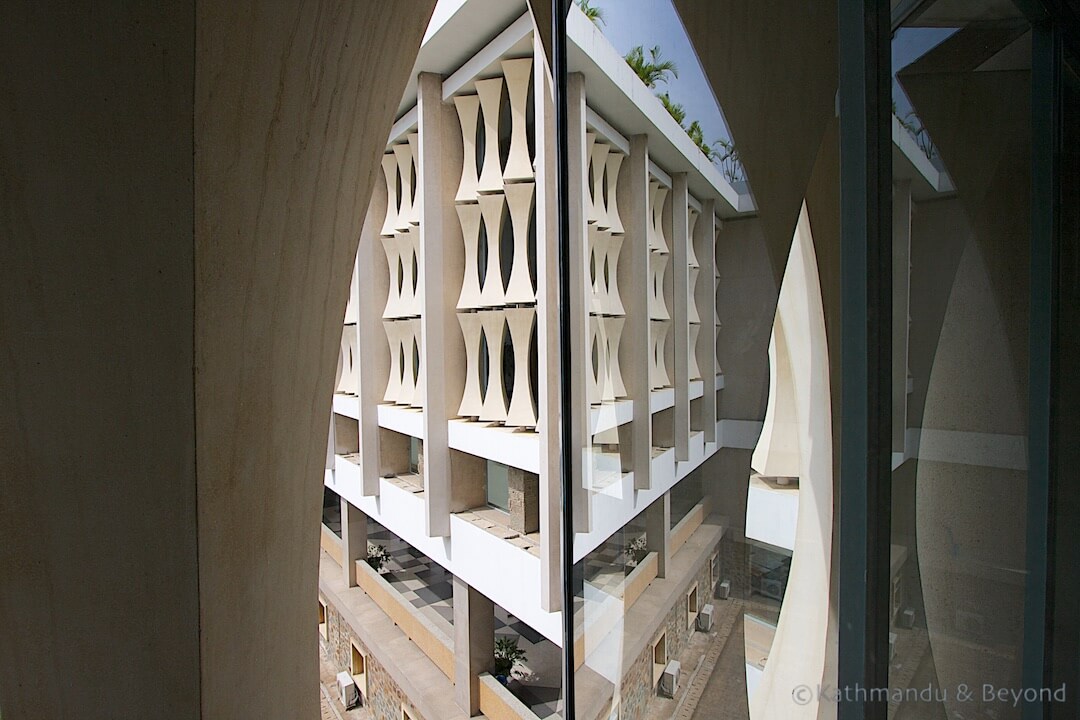
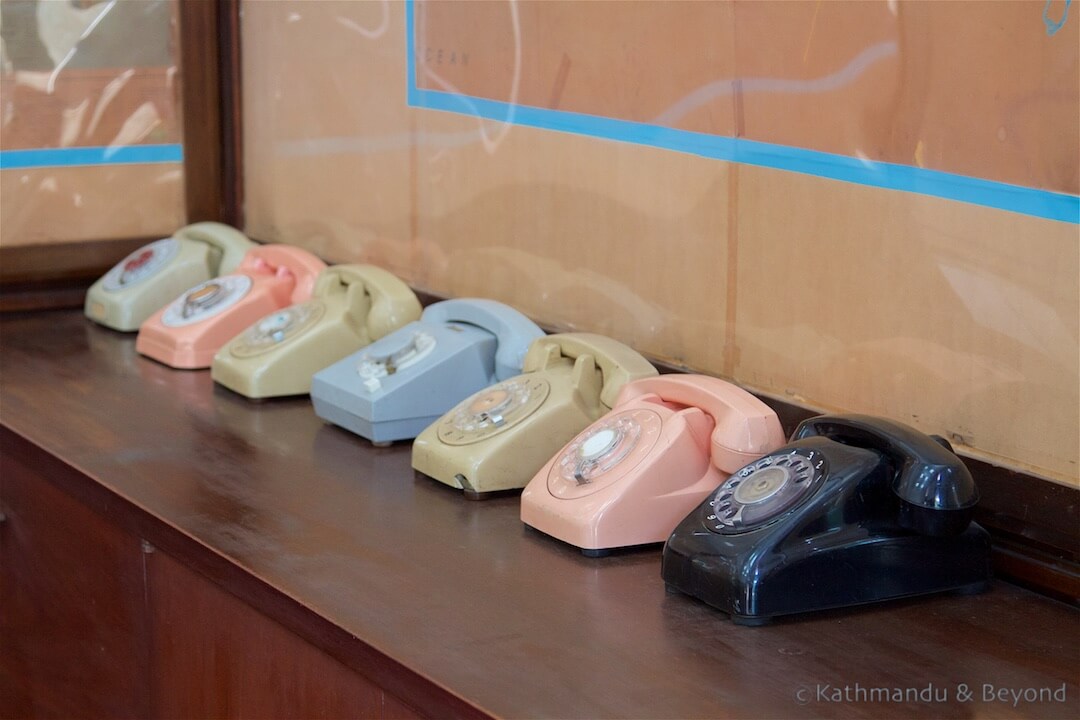
Reunification Palace
War Remnants Museum
This superb museum is hard-hitting and doesn’t pull any punches. Inside you will see photographs of numerous U.S. atrocities including My Lai, probably the most notorious act of barbarity of the entire war. Interestingly, many of the photographs on display have come from American resources. Other exhibits focus on the horrible effects of Agent Orange and Napalm and there is also plenty of military hardware in the grounds of the museum including captured helicopters, tanks and guns.
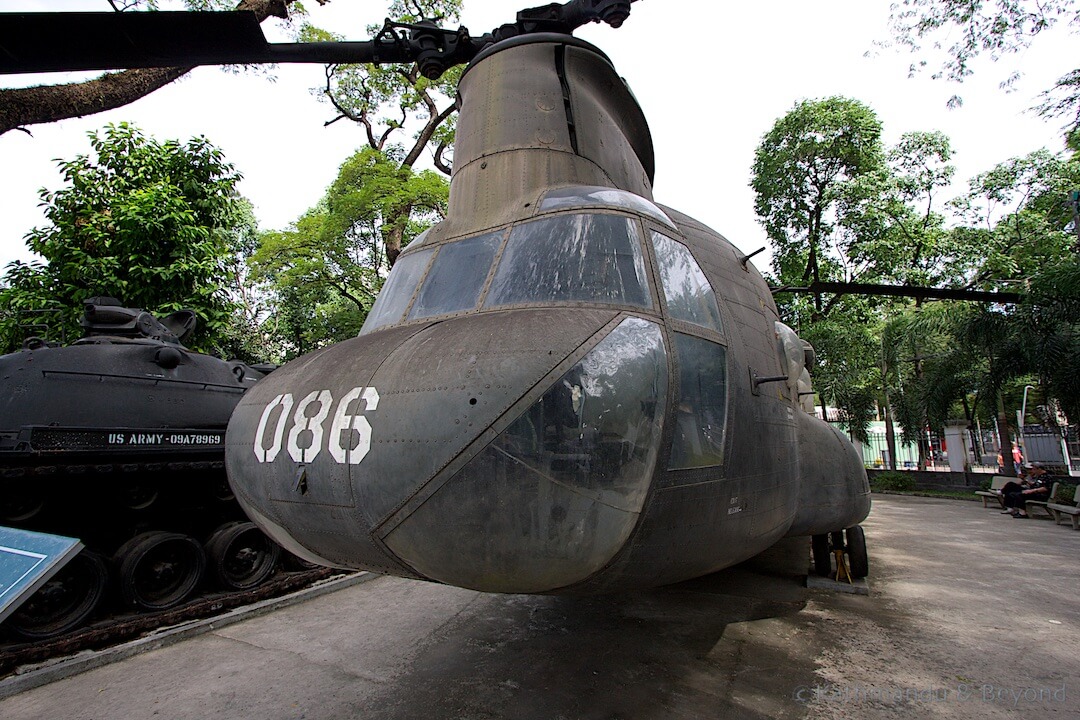
American hardware from the Vietnam War on display at the War Remnants Museum
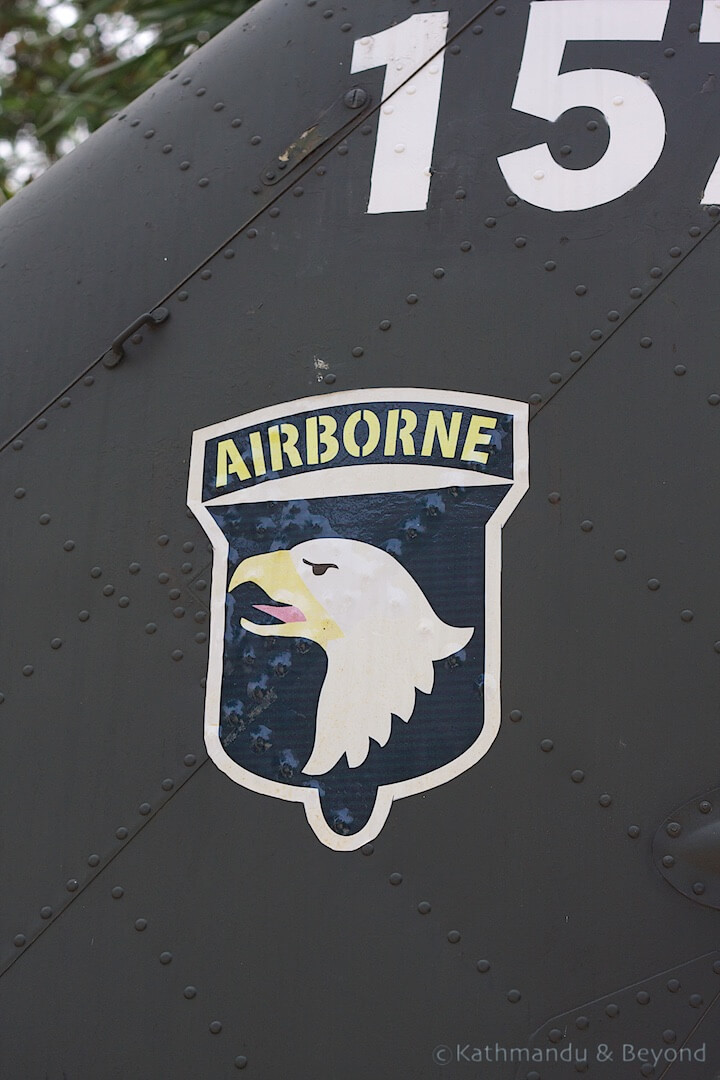
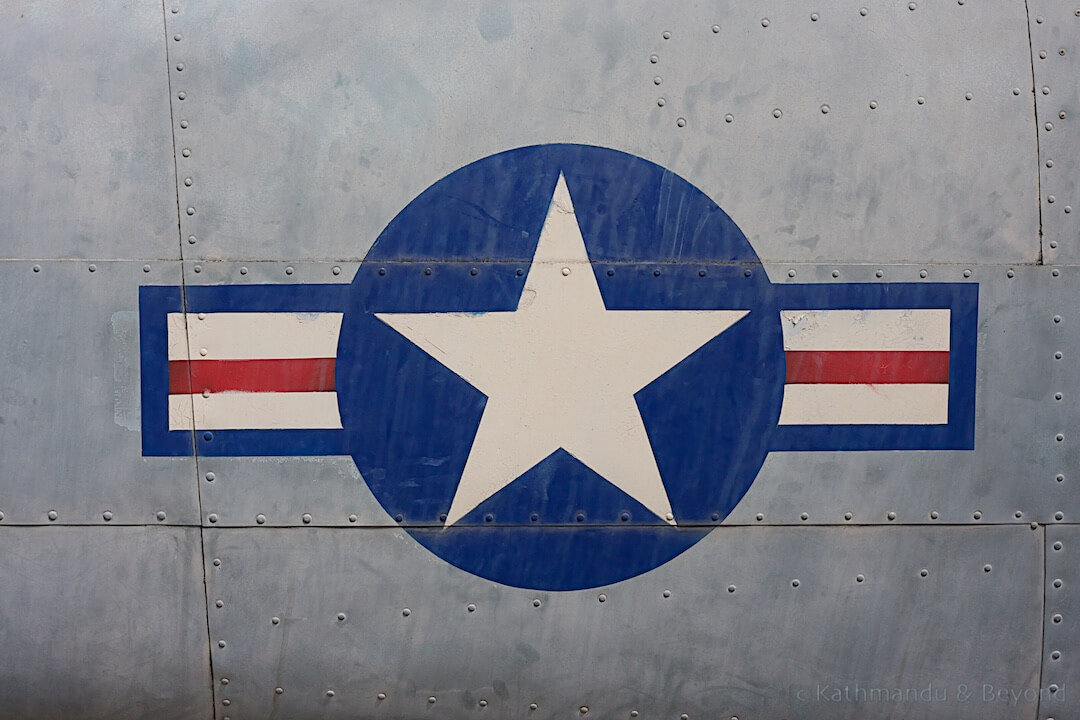
American hardware from the Vietnam War on display at the War Remnants Museum
For me personally, the most interesting section of the museum is the Requiem Exhibition, which documents the work of photographers (on both sides) who were killed throughout the duration of the conflict. The exhibition was put together by Tim Page, one of the most famous and well-respected photographers of the Vietnam War.
The museum is not without its critics, many of whom claim it to be one-sided with Americans being portrayed as out and out evil whilst the North Vietnamese forces (Viet Cong) were kind to all and only ever wanted peace. Whatever your opinion (pre or post-visit), the museum is an essential stop for anyone visiting HCMC, regardless of your level of interest in the Vietnam War.
Note both the palace and the museum are very popular with tourists. Expect crowds, a degree of disrespect and plenty of horrible selfie sticks.
Fine Arts Museum
Housed in an attractive yellow-coloured French colonial-era building, the Fine Arts Museum is an excellent place to see Combat Art by Vietnamese artists. The museum is divided into three sections with all of the Combat Art located in the building closest to the ticket booth. There’s plenty of stirring artwork on display, all with creative titles such as The soldier is telling the story, Meeting their children on Truong Son Road and Uncle Ho and civilians. Photography is allowed and in one section of the museum (and also outside in the courtyard), there are several interesting statues on display. Many are reminiscent of Socialist-era sculptures that can be seen every now and then in countries such as China and those of the former Eastern Bloc. It takes a leisurely hour to see all of the art on display and what’s more, the interior of the museum is a welcome respite from the mayhem outside.
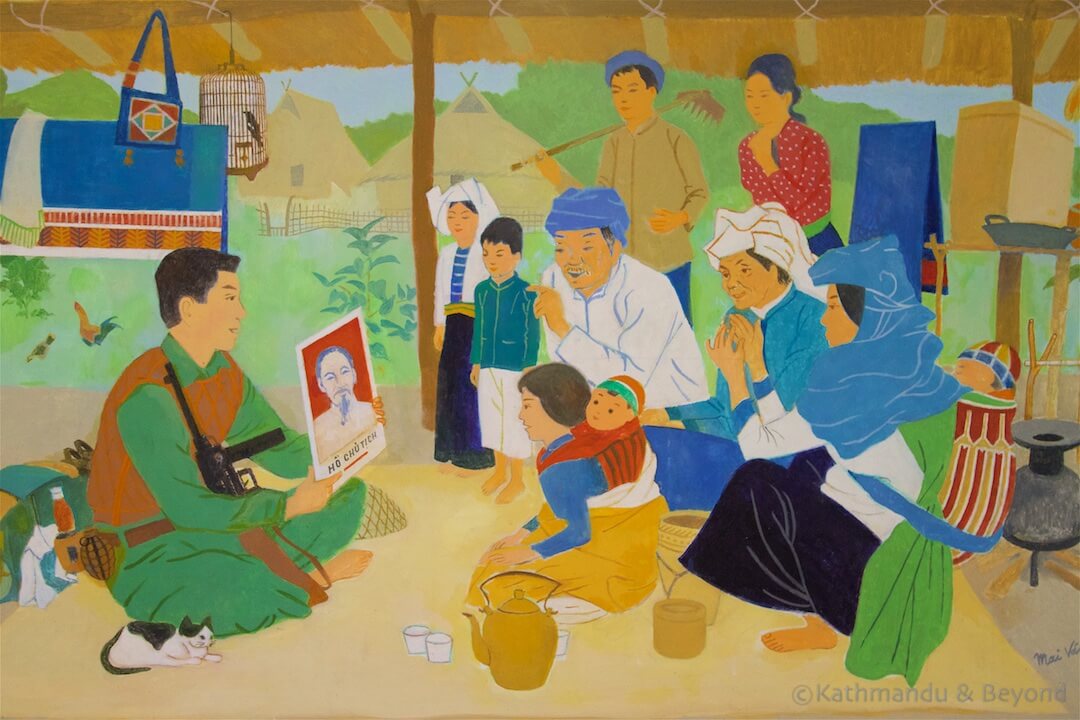
Museum of Fine Arts
As an aside, when I was searching Combat Art on the internet, I discovered the American military had their own set of artists who were tasked with creating pictorial records of the Vietnam War for the annals of American army military history. The U.S Army first used combat artists during the Second World War and established the Vietnam Combat Artists Program in 1966. Teams of five or so soldier artists would arrive in Vietnam and spend sixty days of temporary duty (TDY) travelling with various units, gathering information and making sketches. Upon their return from the combat zone, they would complete their work and then presumably pass it on to the appropriate authorities. The well-known artist, James Pollock, applied for a Vietnam Combat Artists Program assignment in 1967, got accepted and consequently served his TDY the same year. Much of his artwork went on display in museums and was also incorporated into various exhibitions after the war was over.
As far as I know, there is no work by American artists on display at the Fine Arts Museum in Ho Chi Minh City.
If you want to learn more then consider joining one of Sophie’s Art Tours. We haven’t been on one yet but they come highly recommended and include a visit to a private home where, by all accounts, the owner has an impressive collection of Vietnamese Combat Art and also Propaganda Art.
For more examples of Combat Art at the Fine Arts Museum see our separate post which has words extracted from this article but features a lot more of the artwork from this era.
HOTELS
Hotel Continental
Located in the heart of District 1, close to the Saigon Opera House, this Saigon institution was a well-known watering hole and meeting place for (mostly) international journalists and photographers throughout both the First Indochina War (1946-1954) and the Vietnam War. The hotel was renamed the Continental Palace during the Vietnam War era and the international war correspondents nicknamed the ground-floor bar the Continental Shelf. Both Time and Newsweek magazines had their Saigon bureaux on the second floor of the hotel.
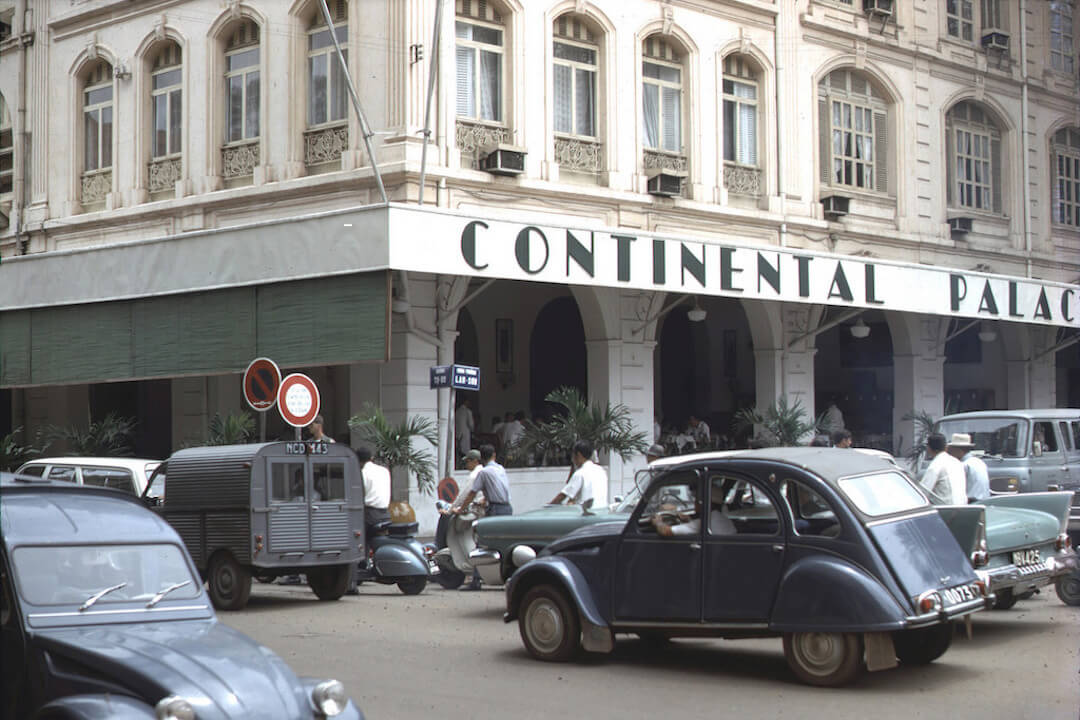
Saigon’s Continental Hotel 1967
Graham Greene wrote part of The Quiet American in Room 214 of the hotel. Indeed the hotel features in the book but interestingly enough, the 2002 film adaptation of the book was not filmed outside the hotel but instead across the road at the Caravelle Hotel, which was mocked-up to look like the Continental. The rationale behind this decision was that the Continental was full and the management didn’t want to disturb its guests.
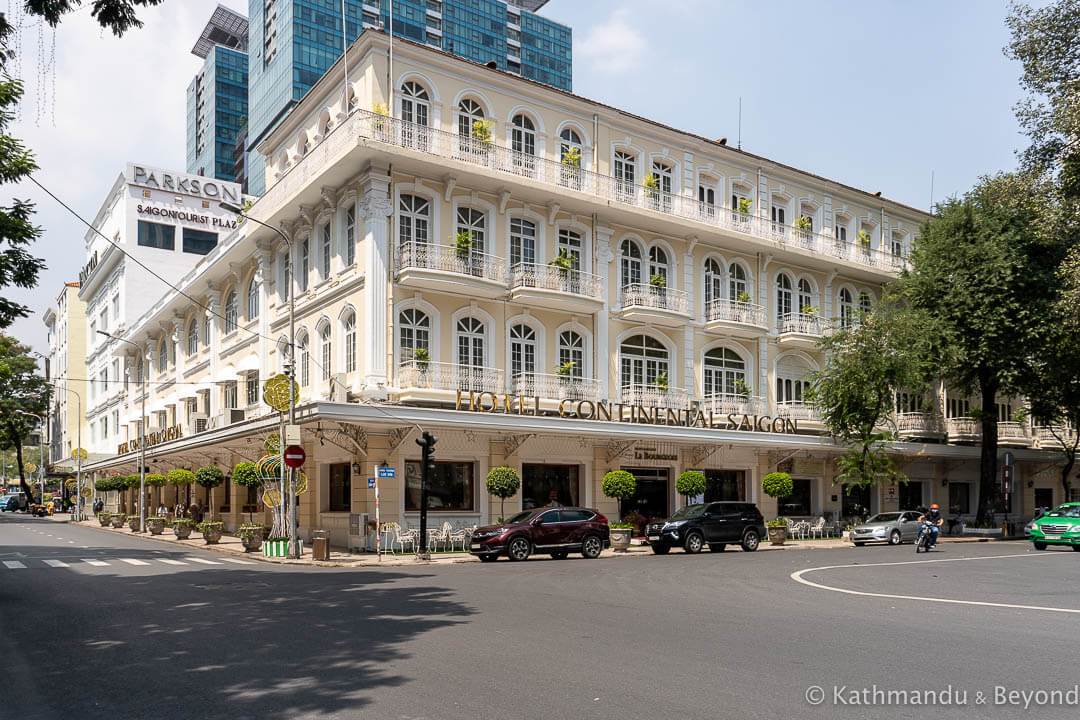
The Continental Hotel in early 2020
Above: the Continental Hotel and the room occupied by Graham Greene. I appreciate the Graham Greene connection is not strictly related to the Vietnam War but it is interesting none the less. It is possible to go inside the hotel and wander up to Room 214 if, like us, you want to pay homage to one of the best writers of his generation.
Caravelle Hotel
After its grand opening on Christmas Eve, 1959, the Caravelle Hotel became home to the Saigon bureaux of news networks ABC and NBC during the 1960s. A pivotal landmark in wartime Saigon, the hotel was the setting for countless public and private meetings between war correspondents and U.S. military officials throughout the Vietnam War. In 1964 a bomb planted by the Viet Cong exploded in Room 514. The floor was mostly occupied by foreign journalists but on this occasion, most were out of town and there were no fatalities.
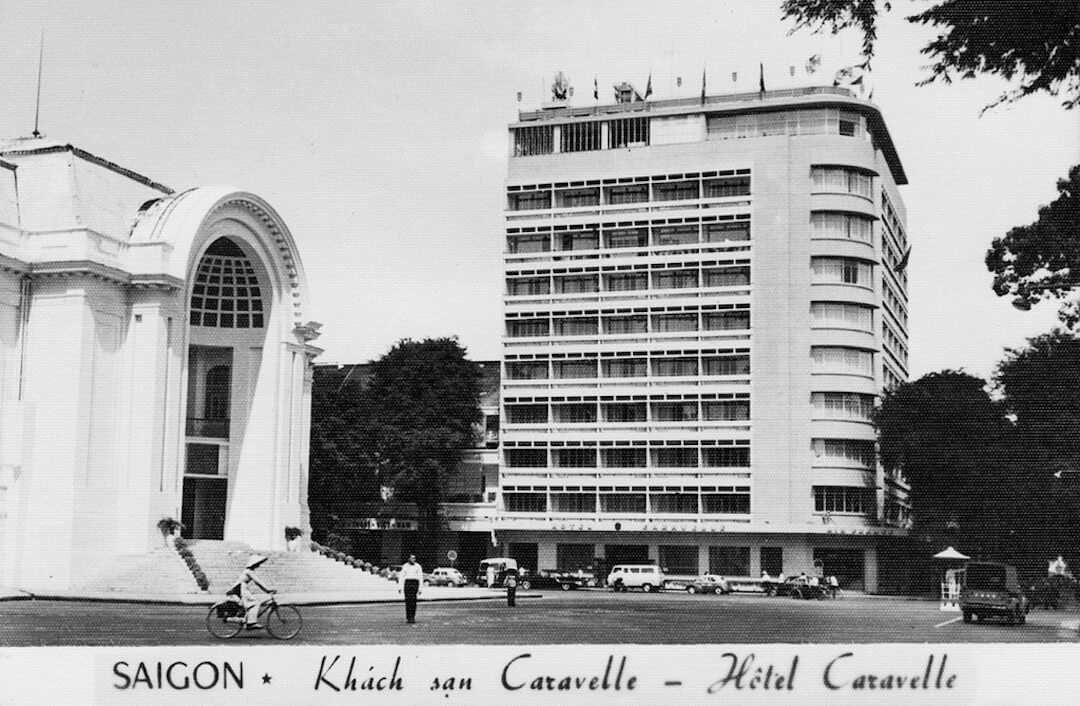
Archive photo of the Caravelle Hotel
For a spot of historic nostalgia, head for a drink in the hotel’s Saigon Saigon rooftop bar. This is where all the cloak and dagger stuff and other shenanigans went on. Happy Hour (4-7pm) is a good time to go as drinks are 50% off marked price. If the sky is clear, you should also get a great sunset. Back in the 1960s, the bar was the highest point in the city!
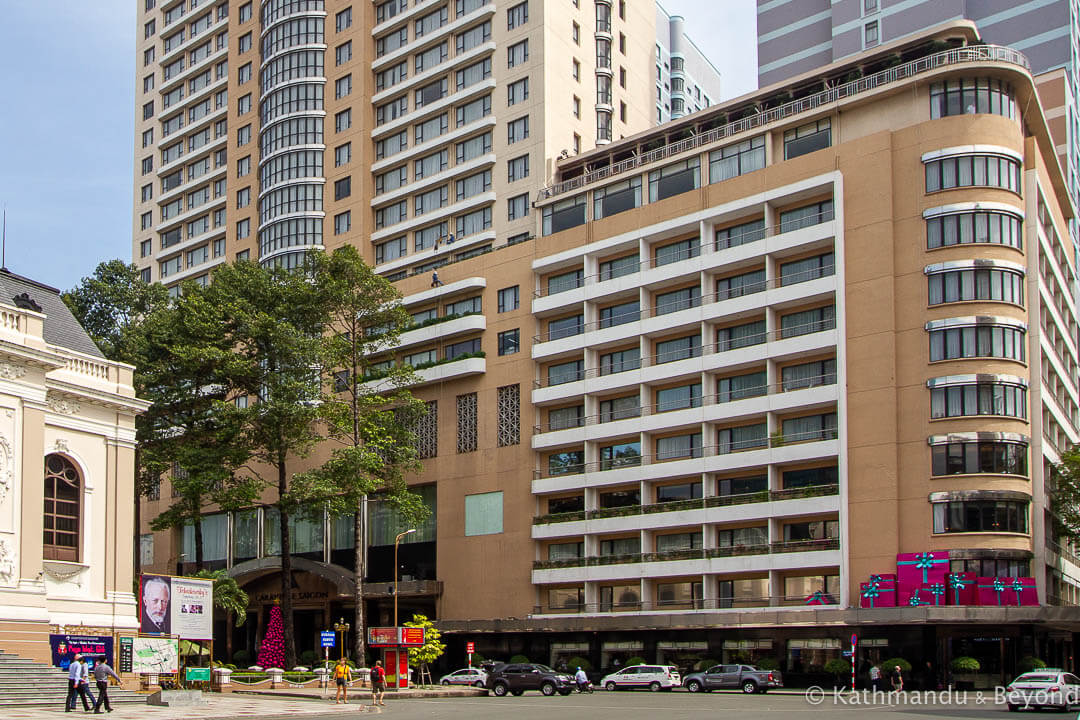
The Caravelle Hotel in early 2016
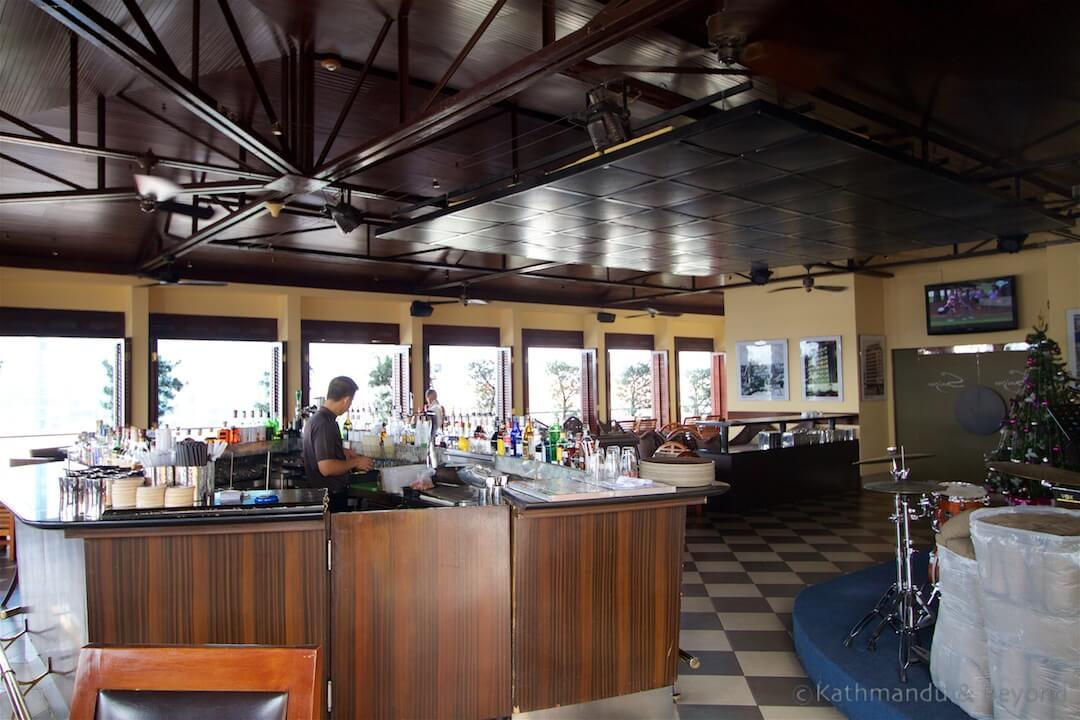
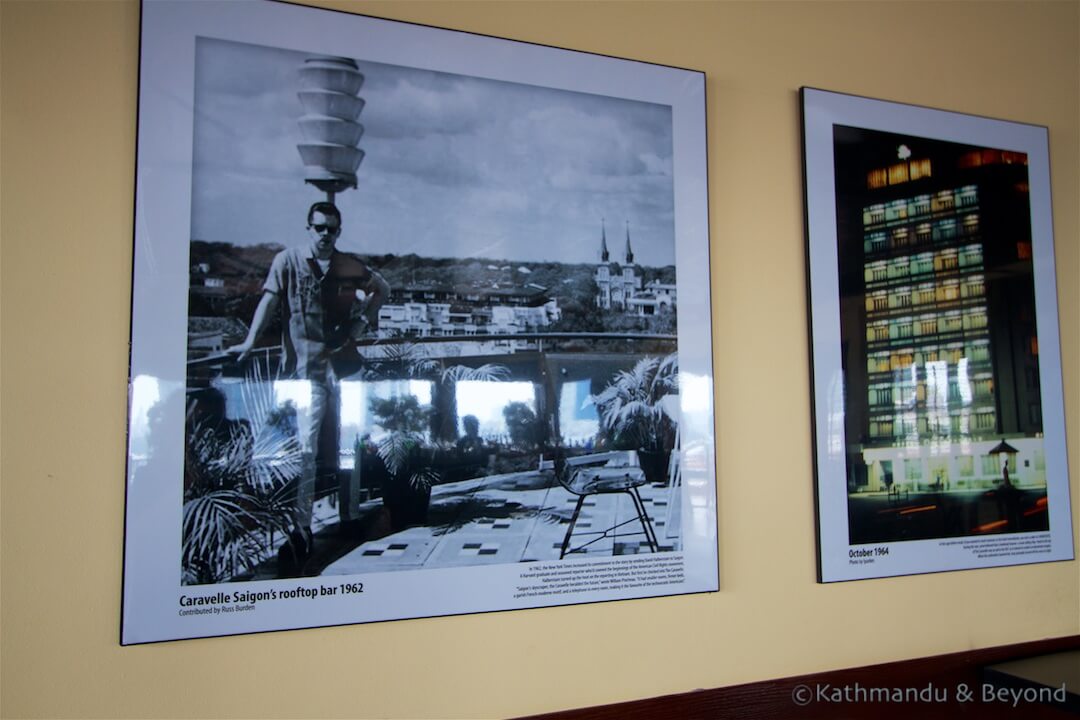
Saigon Saigon rooftop bar at the Caravelle Hotel
Rex Hotel
Starting life as a two-storey auto dealership, renovation work to convert the building into a hotel began in 1959. In December 1961, the first guests arrived at the hotel. These guests were 400 U.S. soldiers. The rest, as they say, is history. The hotel is better known for hosting the American military command’s daily conference, nicknamed the Five O’clock Follies by the more cynical journalists because of the misguided optimism displayed by the presenters, especially in the latter years of the war. The iconic rooftop bar was a renowned hangout for journalists and military officials alike. The hotel has received a facelift in recent years, losing much of its faded-grandeur charm, but the rooftop bar is still pretty dated in appearance and a great place for a drink. Note that drinks are considerably more expensive here than at the Caravelle, especially if you head to the Caravelle during Happy Hour. The staff don’t seem to have an issue with you heading up to the bar and just having a look around.
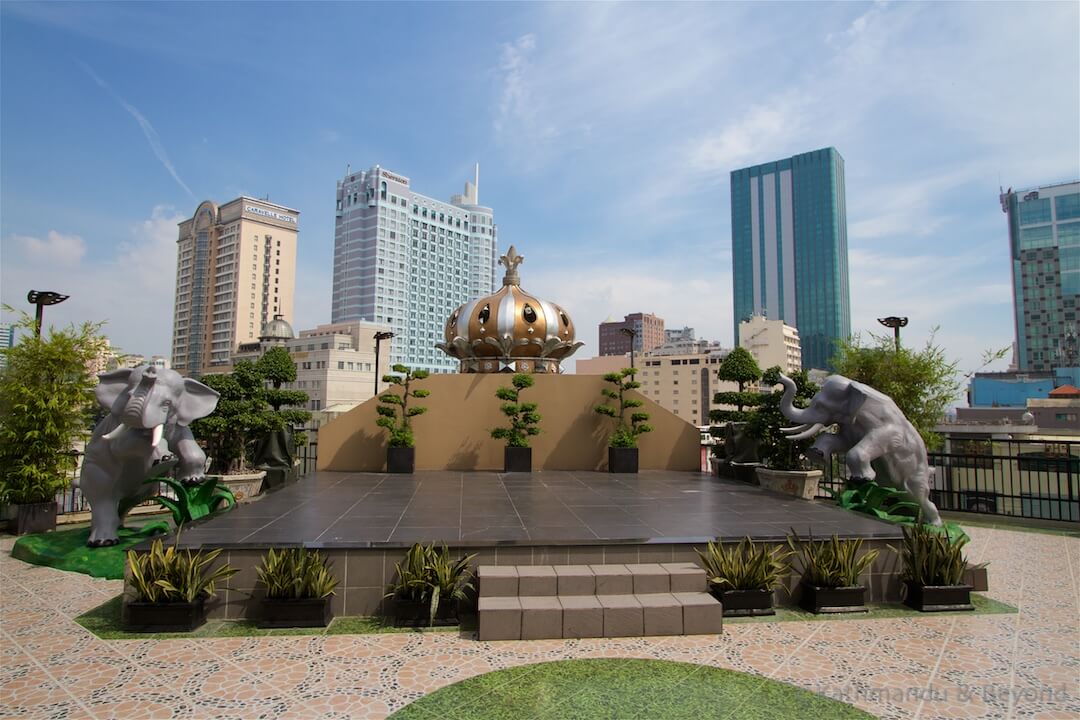
The Rex Hotel
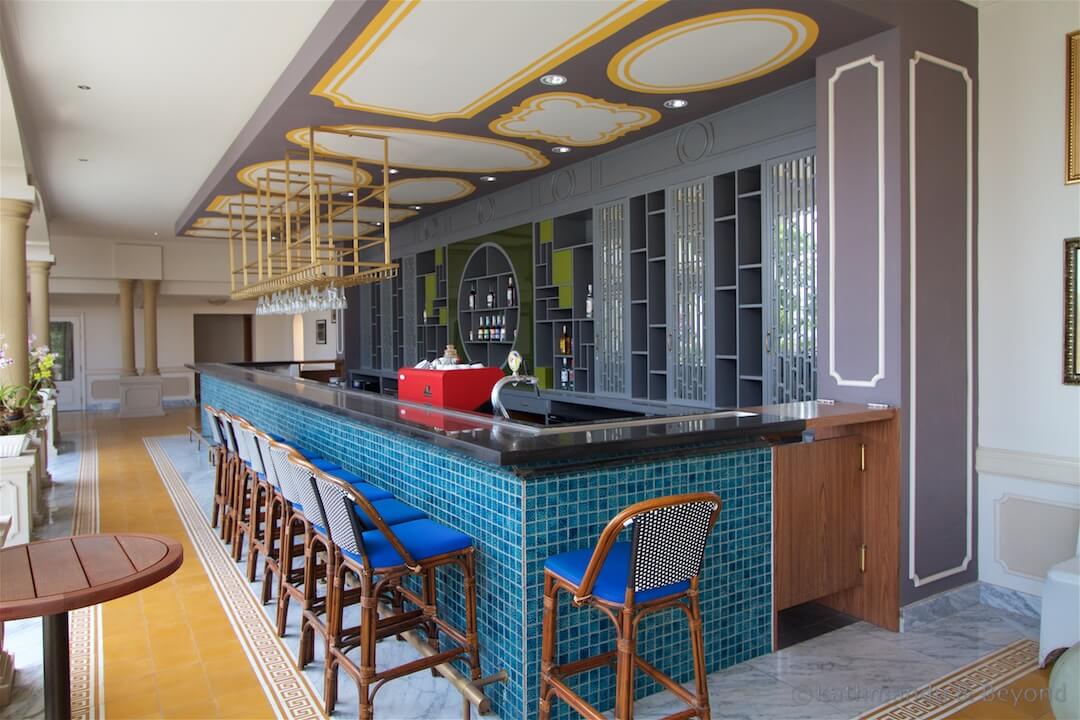
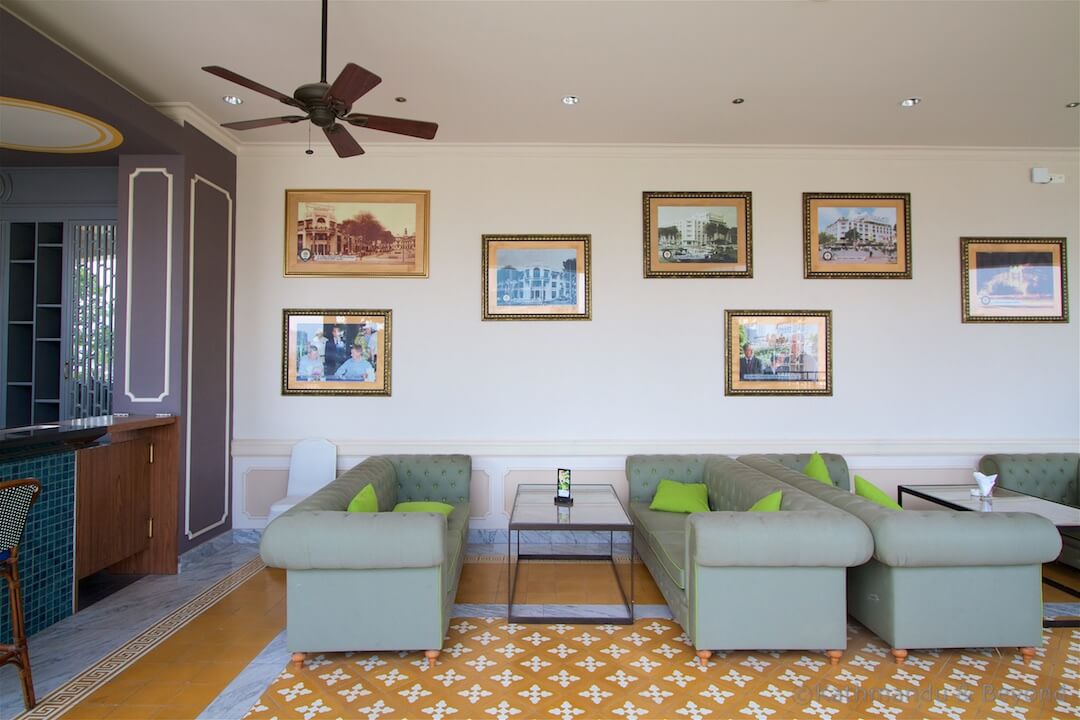
The Rex Hotel
MEMORIALS
Venerable Thích Quảng Đức Memorial
Thích Quảng Đức was a Buddhist monk who burnt himself to death at a busy Saigon intersection on 10th June 1963. He was protesting against Ngo Dinh Diem’s South Vietnamese government and its policies towards Buddhism (*). The event was captured photographically by Malcolm Browne, an American photographer and journalist. The photograph appeared on the front pages of newspapers worldwide and was a crucial contributing factor to the downfall of the Diem regime. Malcolm Browne later received a Pulitzer Prize for the photograph.
(*) Diem (pronounced ‘jim’), president of South Vietnam from 1955 until 1963, was a staunch Catholic and was often accused of persecuting Buddhists.
A respectful monument now stands on the spot of the self-immolation.
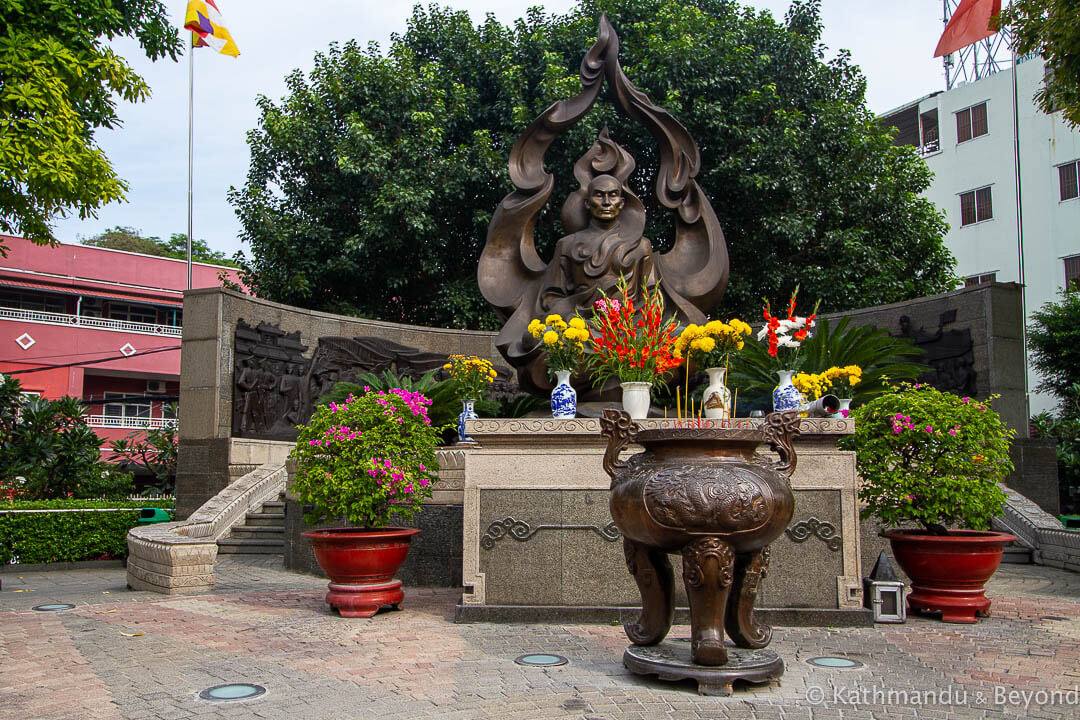
Venerable Thich Quang Duc Memorial

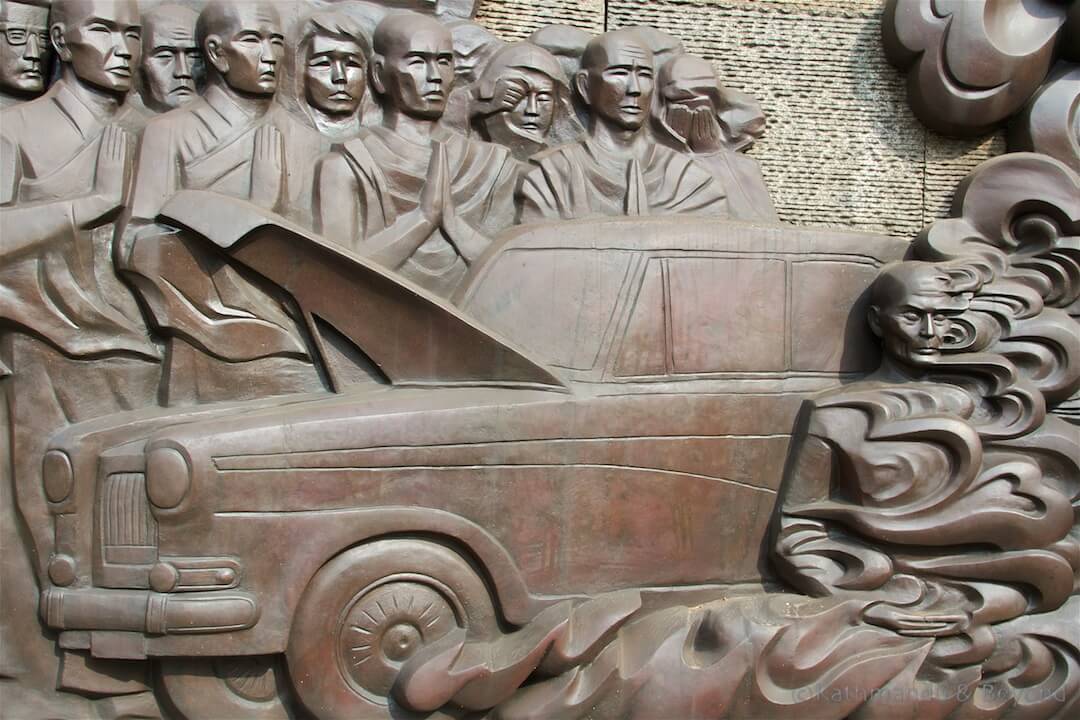
Malcolm Browne’s original photograph of Thích Quảng Đức’s self-immolation (left) and the same scene recreated as part of the Venerable Thich Quang Duc Memorial (right)
NOTABLE BUILDINGS
22 Gia Long Street
The white 1960s building at 22 Gia Long Street is the location of one of the most famous evacuations in history. The rooftop of this unremarkable looking building was one of the chosen assembly points for the Operation Frequent Wind evacuation of American civilians and ‘at-risk’ Vietnamese during the final days of the Fall of Saigon. The famous scene in which a line of evacuees are seen boarding a CIA-operated Air America Huey helicopter was captured photographically by the Dutch photo-journalist, Hubert Van Es, who was working for United Press International (UPI) at the time. Van Es captured the image from UPI’s office, which was located about four blocks away, using a 300mm lens attached to his Nikon camera. He was paid a one-off bonus of US$150 for the photo. The image remains one of the most remembered photos of the entire war.
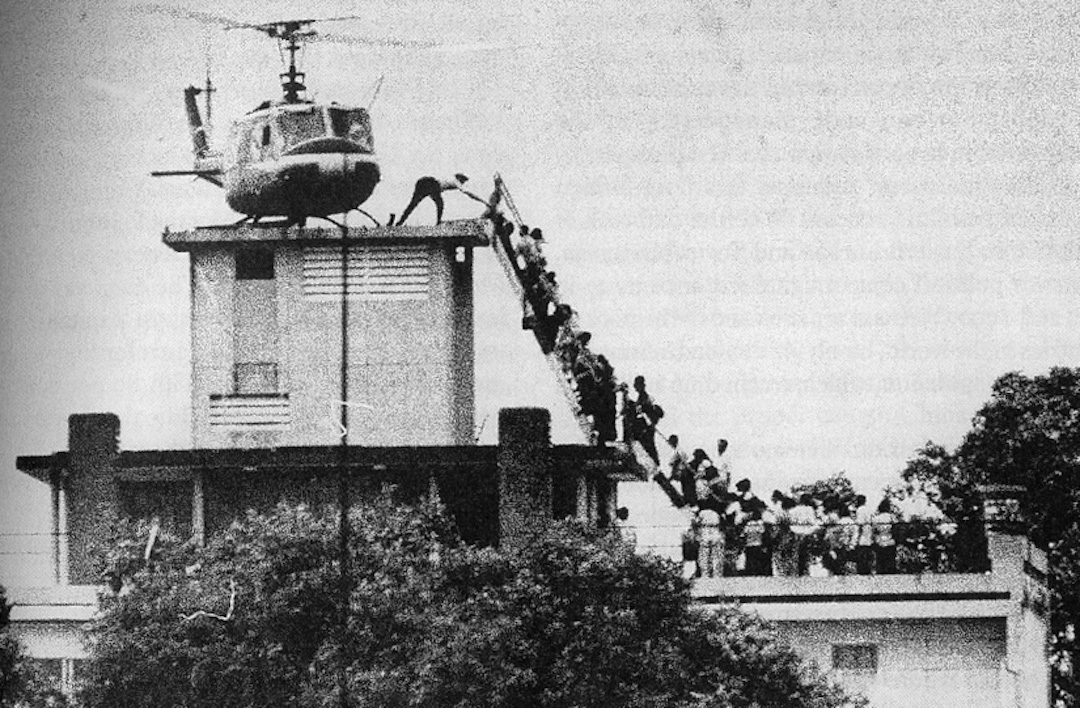
Hubert Van Es’s photograph of the evacuation from the rooftop of 22 Gia Long Street
There are plenty of misconceptions surrounding the building and the evacuation. The building was not the U.S. Embassy and neither was it the CIA building. It also wasn’t the last helicopter evacuation to leave the city – that was reportedly about twelve hours later. In fact, the building was called Pittman Apartments and it housed employees of the United States Agency for International Development (USAID) and the top floor was reserved for the CIA’s deputy chief of station.
With the address renamed 22 Lý Tự Trọng (Lý Tự Trọng was a Vietnamese revolutionary who was executed by the French in 1931 aged 17 years old), the building is centrally located near the Vincom Centre and the Saigon Opera House. It’s now dwarfed by modern, taller buildings but it is still clearly visible if you know what to look for. If you stand just to the left of the Saigon Central Post Office and look directly towards the Vincom Centre you will get a good, albeit distant, view of the building. Getting onto the rooftop itself is tricky. The building is now occupied by the Vietnam National Chemical Group and the security guide won’t let you past the ground floor entrance (*).
(*) We tried and didn’t get very far. Although it has been known that sometimes the security guide will take a bribe in return for access.
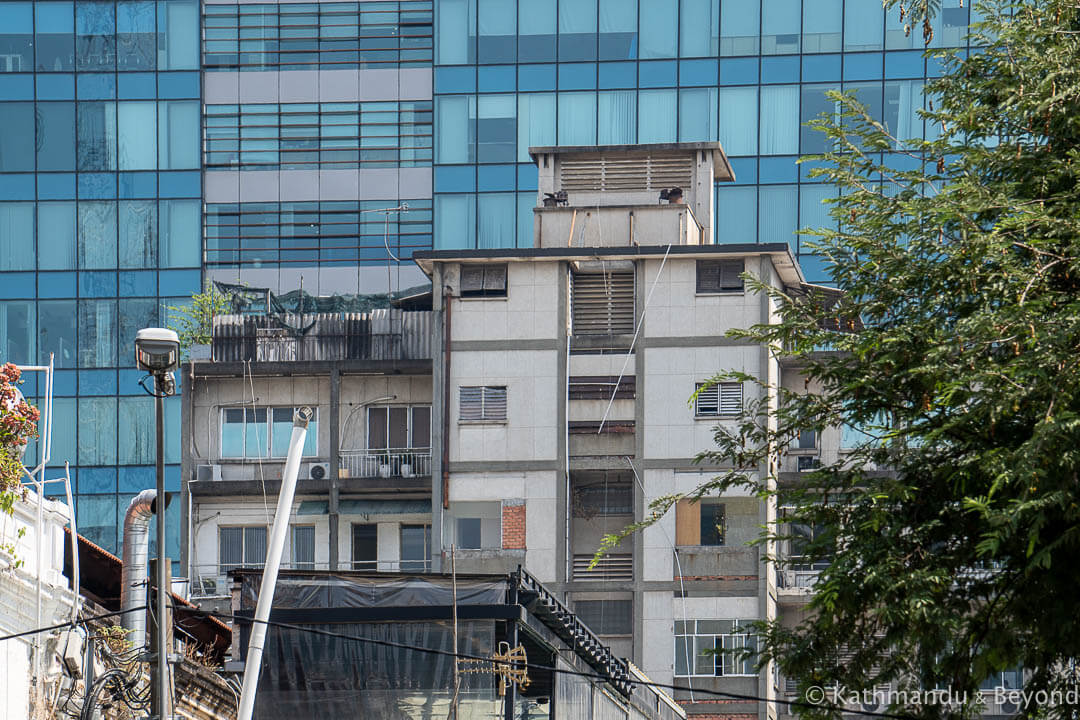
22 Gia Long Street in early 2020
There is a way of obtaining a closer look at the building however. With your back to the Vincom Centre, head to your left and enter 26 Ly Tu Trong Street. Inside, there are some art galleries, a few cafés and a cooking school but more importantly, there is also an external stairwell and, if you climb to the last level before reaching the rooftop village (believe me, the village exists!) and look out to your right, you will get a very different perspective of the building. As an added bonus you will also have a fine view of Notre Dame Cathedral from the same vantage point.

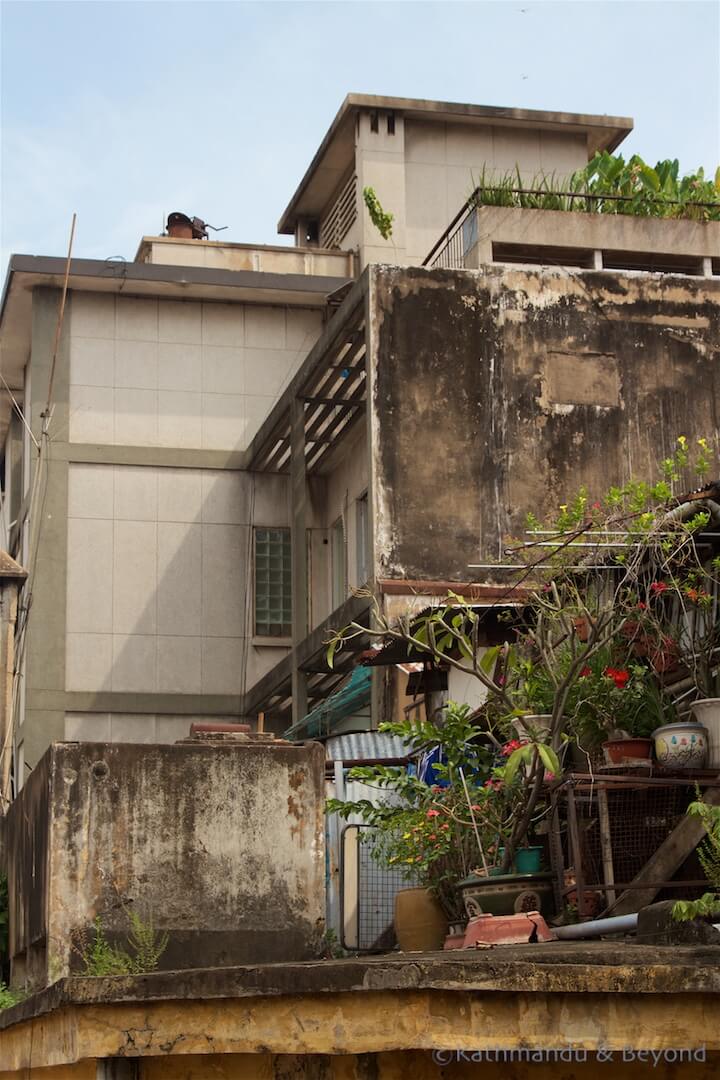
Entrance to 26 Ly Tu Trong Street and a closeup view of 22 Gia Long Street
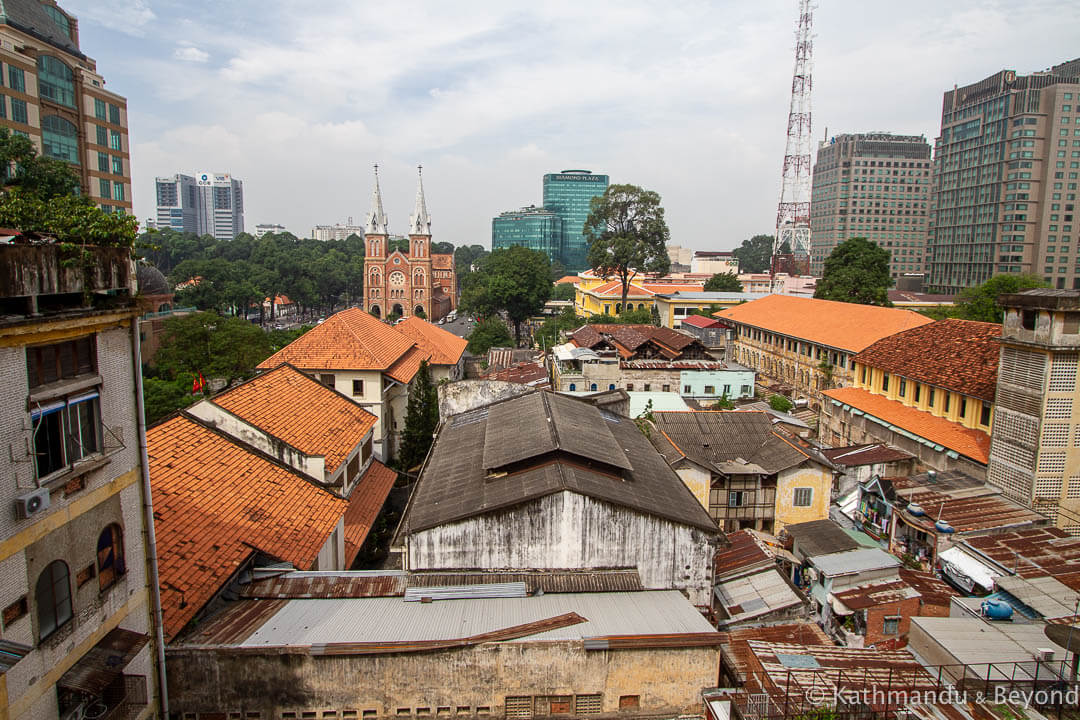
City view from the rooftop of 26 Ly Tu Trong Street
U.S. Consulate General (Former U.S. Embassy)
The United States Embassy in Saigon was first established in June 1952 and moved to the building in the photos in 1967. The embassy finally closed in 1975. During much of the 1980s, the embassy building was used as the offices of PetroVietnam, the Vietnamese national oil company. In 1995 the site was eventually handed back to the American government. The building was demolished in 1998 and a new U.S. Consulate General was built on the old consular compound. The space where the original embassy was located is now a park within the grounds of the U.S. Consulate General. The U.S. Embassy is now in Hanoi.
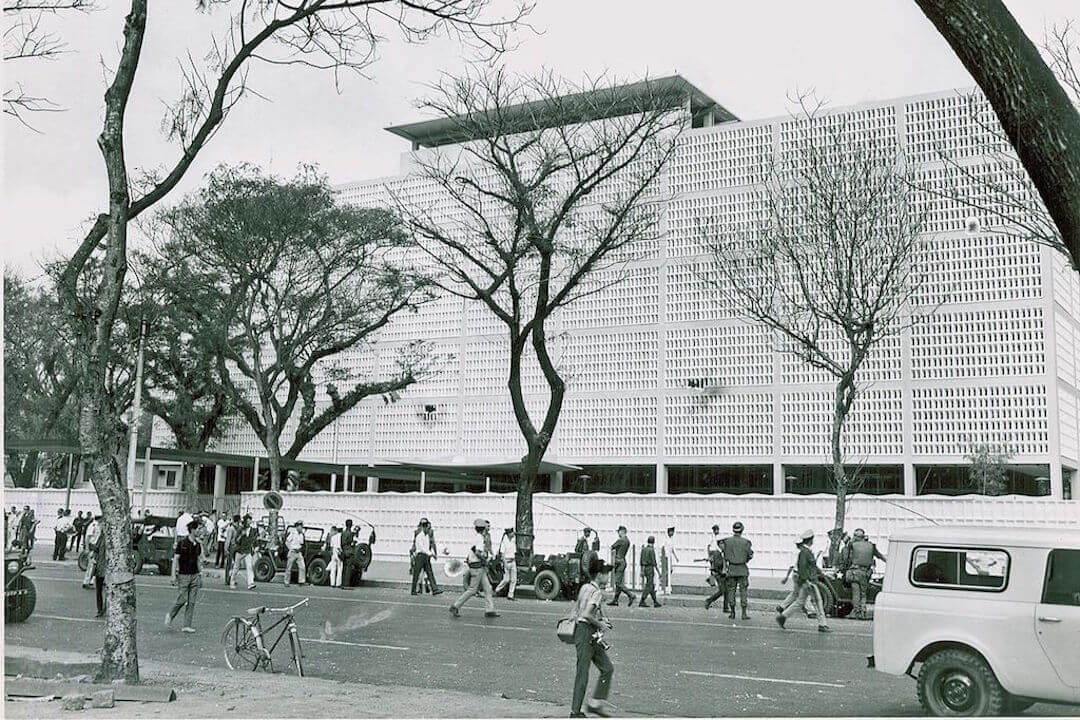
The US Embassy in Saigon in January 1968
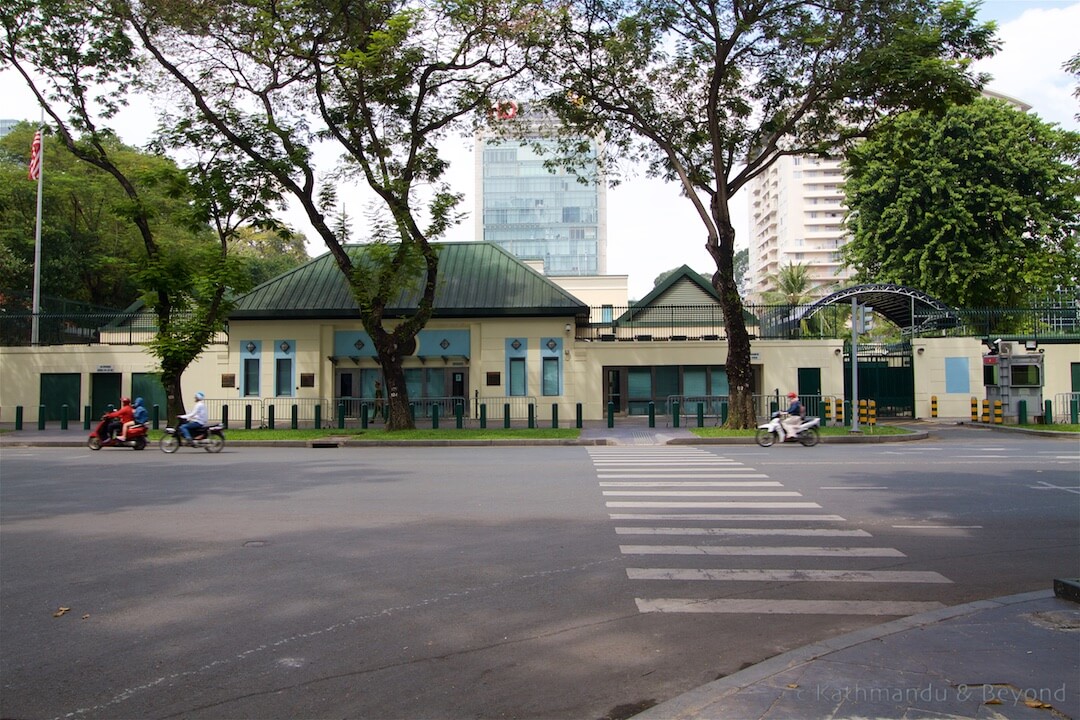
The current U.S. Consulate General in Ho Chi Minh City
The old U.S. Embassy was the scene of several significant events during the course of the Vietnam War, most notably the attack by the Viet Cong during the TET Offensive of 1968 and the well-documented series of helicopter evacuations during the final days of the Fall of Saigon. One of the most interesting characters at the embassy during that period has to be the ambassador himself, Graham Martin. The ambassador refused to be evacuated until the very last moment on 30 April 1975, when Communist forces were literally on his doorstep. His wife, who left by helicopter a few days earlier, left behind her personal suitcase so that a Vietnamese woman could be squeezed in beside her. (*)
(*) Cynics would say ‘So she should. It was the least she could have done,’ etc., but we recently watched a BBC documentary that focused heavily on the couple and they came across as very honourable people who cared very much about the South Vietnamese people and the situation around them. The couple reminded me of Lord and Lady Mountbatten and how they dealt with the final days before the Partition of India in 1947. The documentary is BBC Storyville; Last Days in Vietnam. It is no longer available on BBC iPlayer but if you can find it elsewhere, it is a superb portrayal of the Fall of Saigon.
I first visited Vietnam in 1992 and made a point of visiting the abandoned embassy during my time in Ho Chi Minh City.
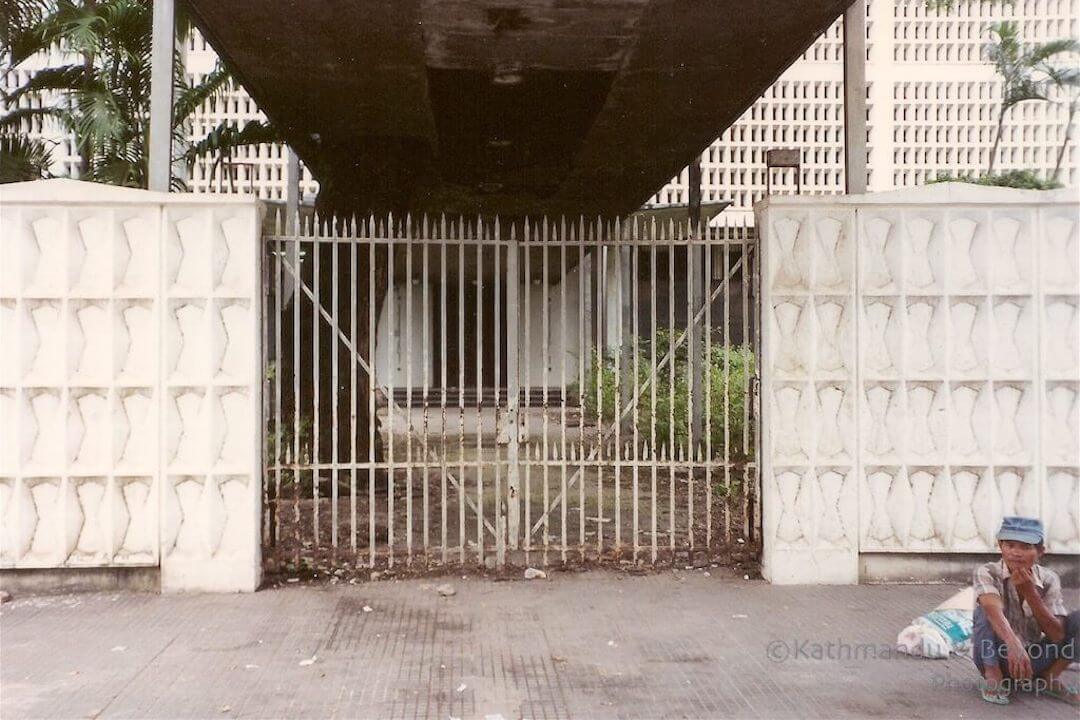
The former US Embassy in Saigon, taken on my visit in 1992
Secret Weapons Hiding Place
Throughout the city, the Viet Cong, with the help of South Vietnam sympathisers, dug numerous secret cellars in which to store weapons and explosives. Đỗ Văn Căn was a shoemaker who lived at 183/4 3 Tháng 2. He dug a tunnel in 1965 and secretly stored AK47s, grenades, pistols, explosives and more besides. Due to circumstance and events, the stash was never used in an attack. By obtaining permission from the office of Culture, Sports and Tourism, it is possible to visit the house which is now a small museum but in our opinion it is not worth the effort. There are some displays on the wall and it is possible to enter the cellar, which is very small, but the weapons have been moved to another location. Instead visit the Secret Weapons Hiding Place Museum which is detailed below.
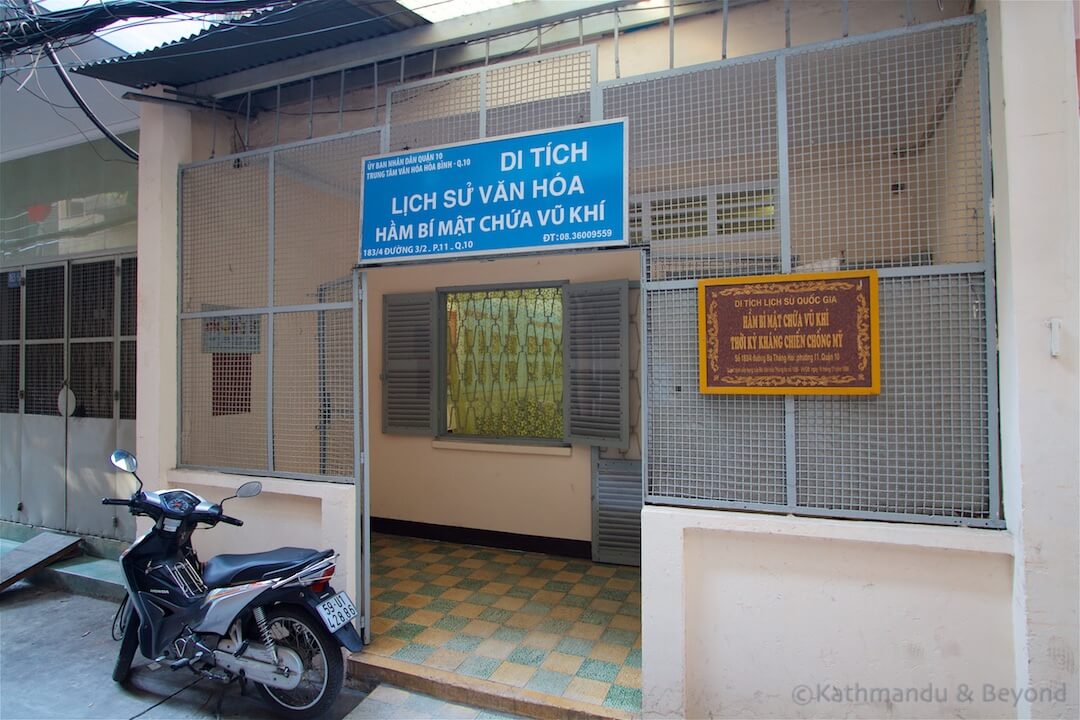
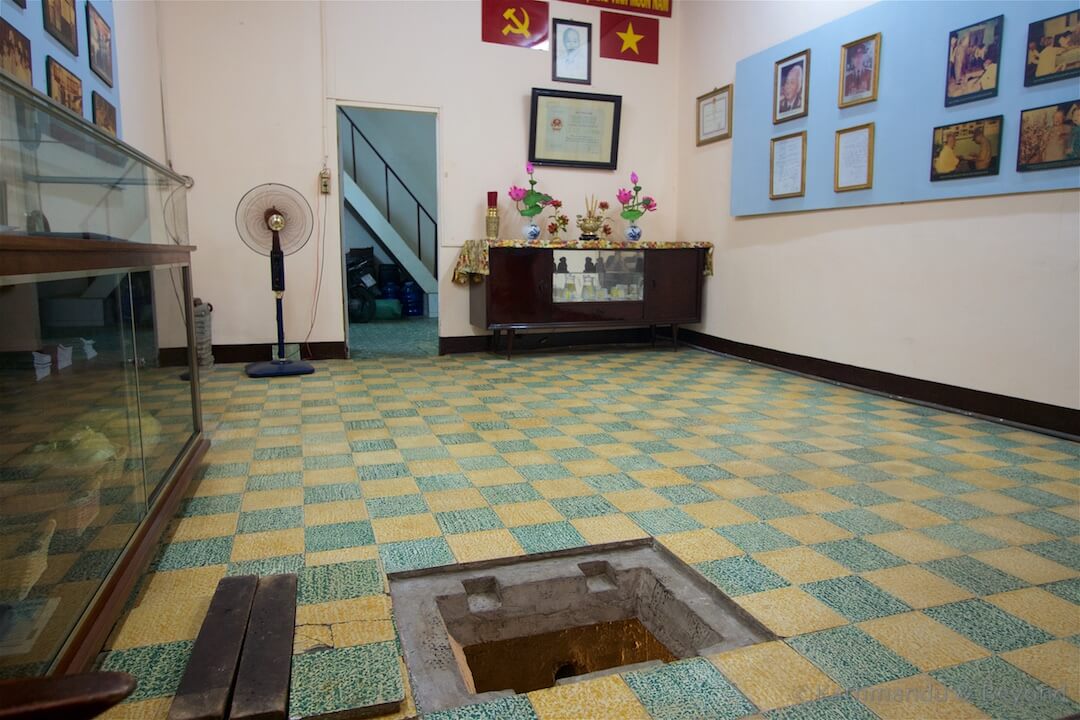
Secret Weapons Hiding Place
Secret Weapons Hiding Place Museum
Another secret cellar, this one is certainly more interesting than the Secret Weapons Hiding Place. The building belonged to Trần Văn Lai, who was a civil servant by day and a Viet Cong operative at other times. He dug two cellars under his house from 1967 onwards. Inside a mass of weaponry was stored, including 350kg of TNT. The building is now a museum which houses some fascinating artefacts. Not only is the cellar crammed with all manner of military hardware, albeit replica, there are also interesting photos on the walls and a bed that had sections carved out in order to hide weapons. It is even possible to climb up into the escape hatch that was ready and waiting should the building ever get raided.
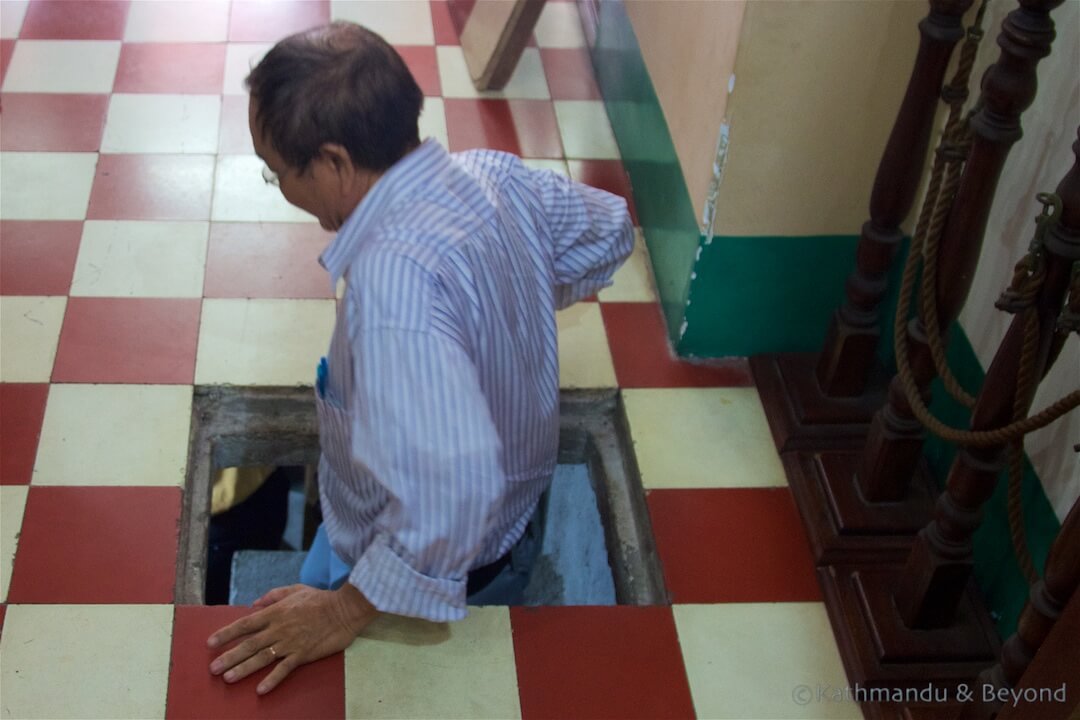
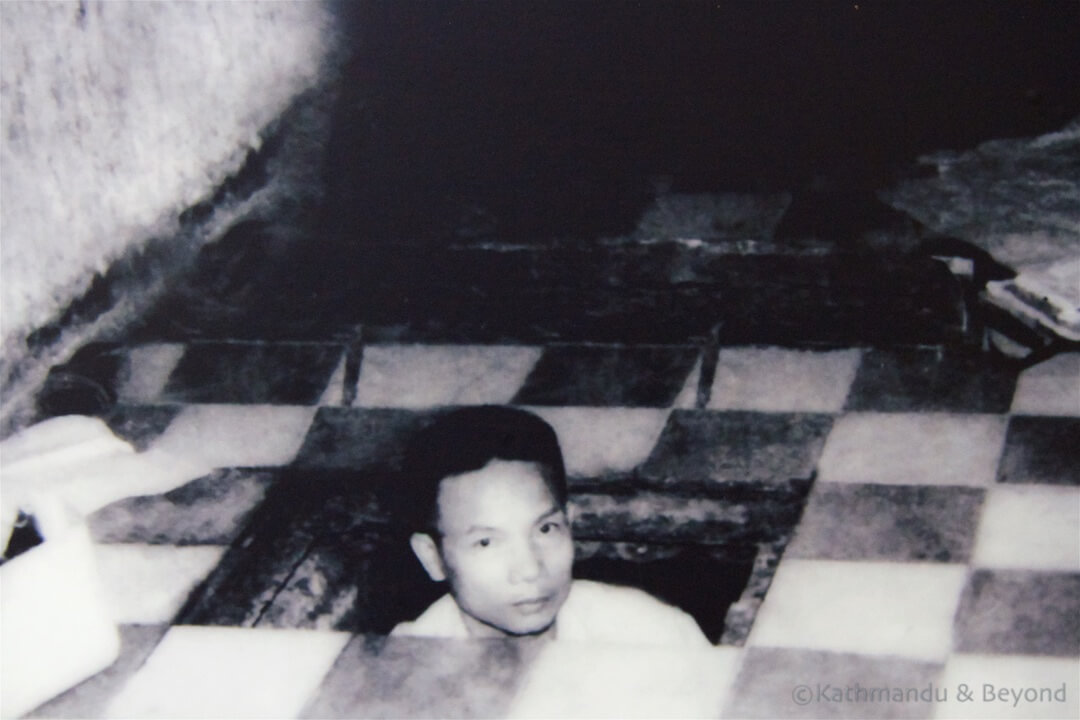
Secret Weapons Hiding Place Museum
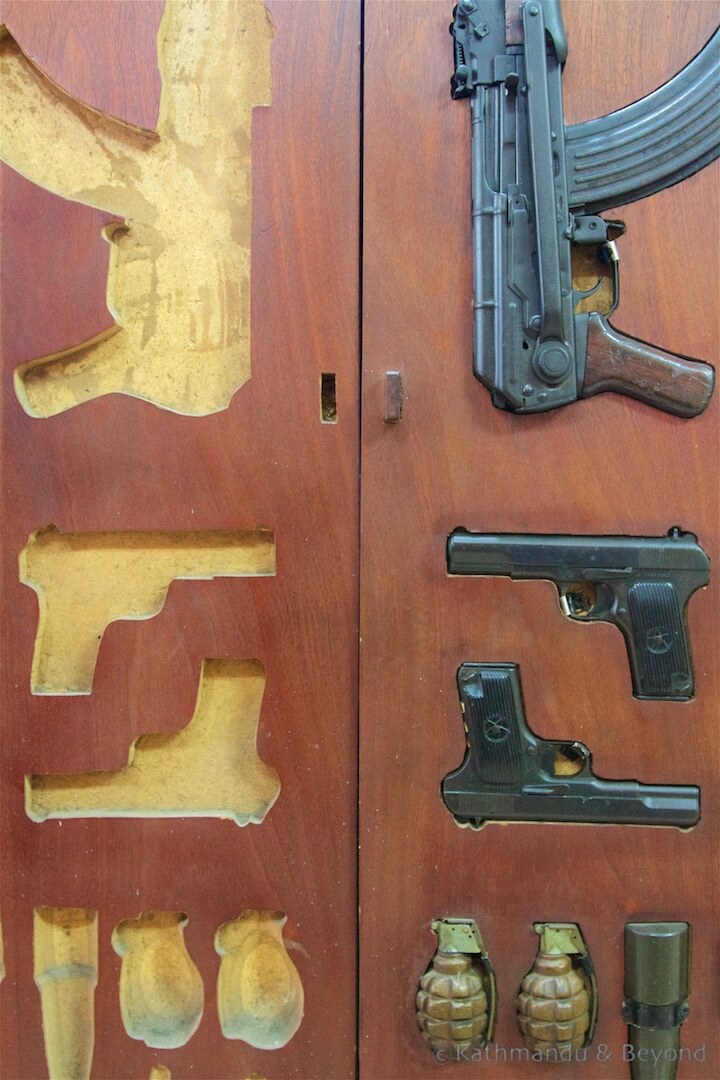
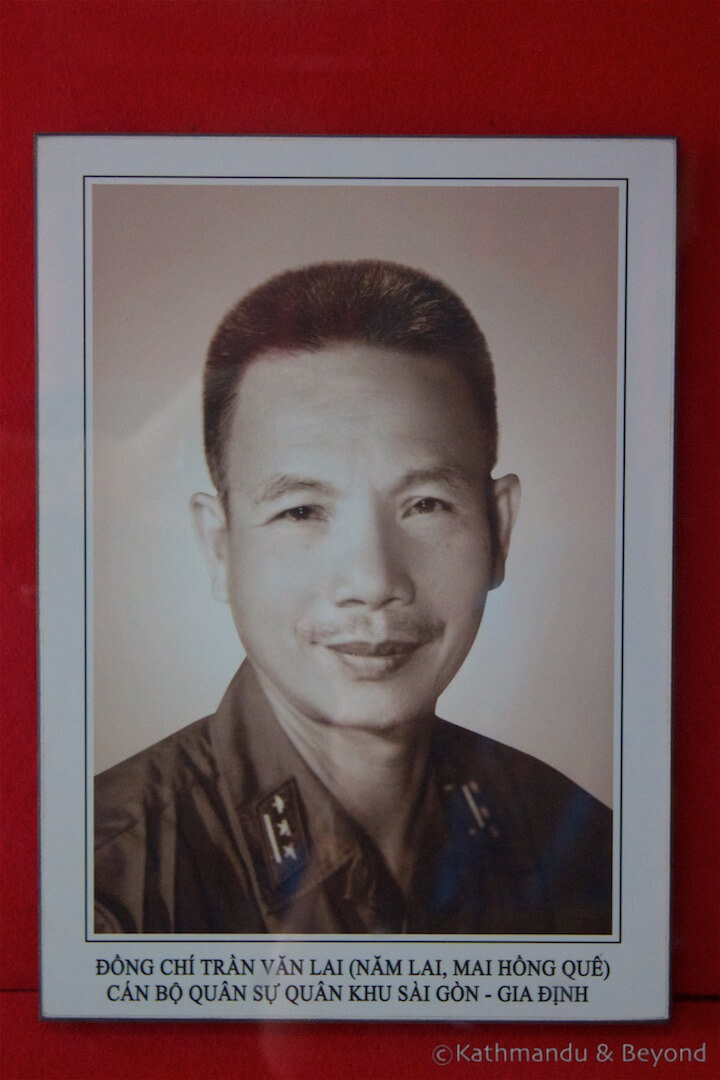
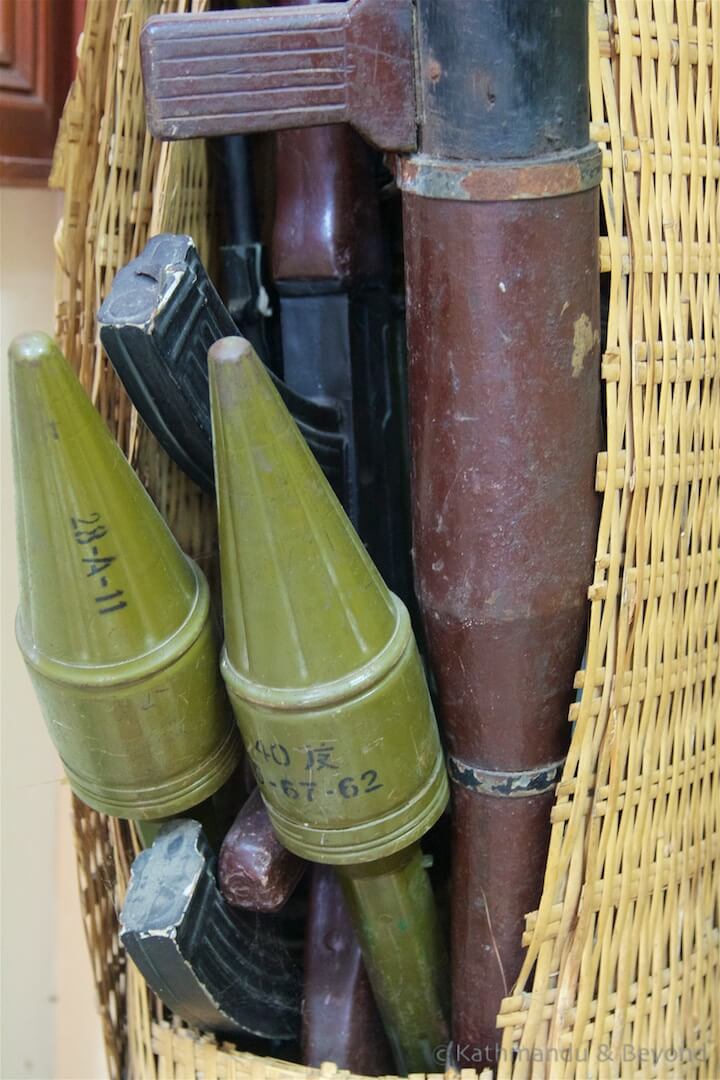
Secret Weapons Hiding Place Museum
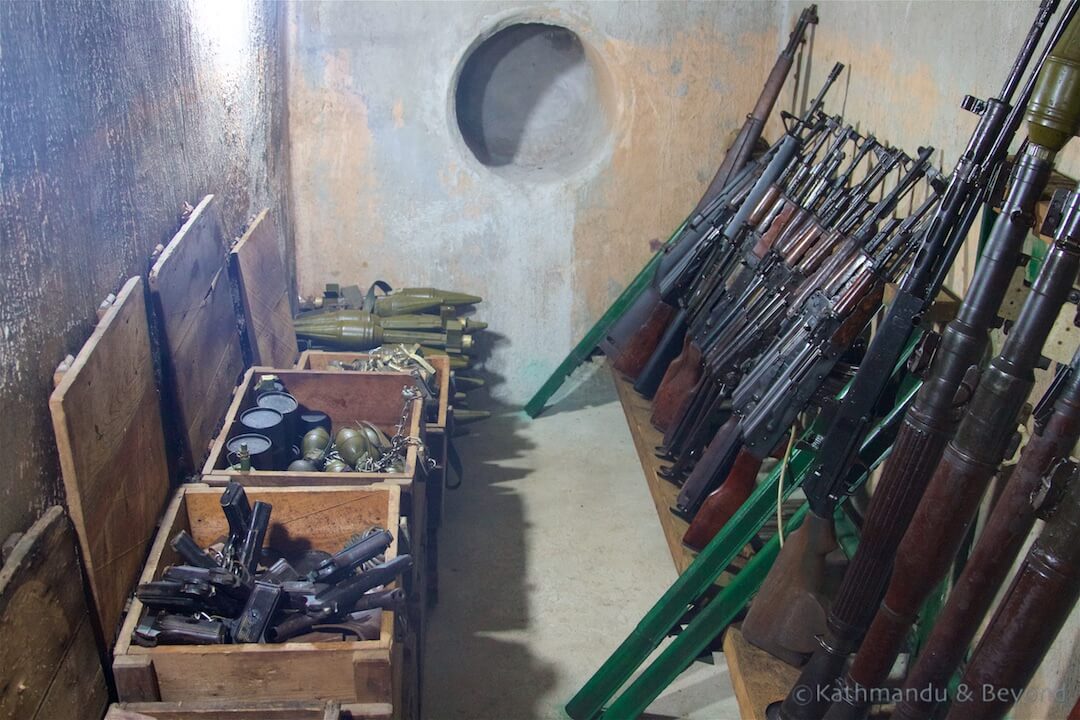
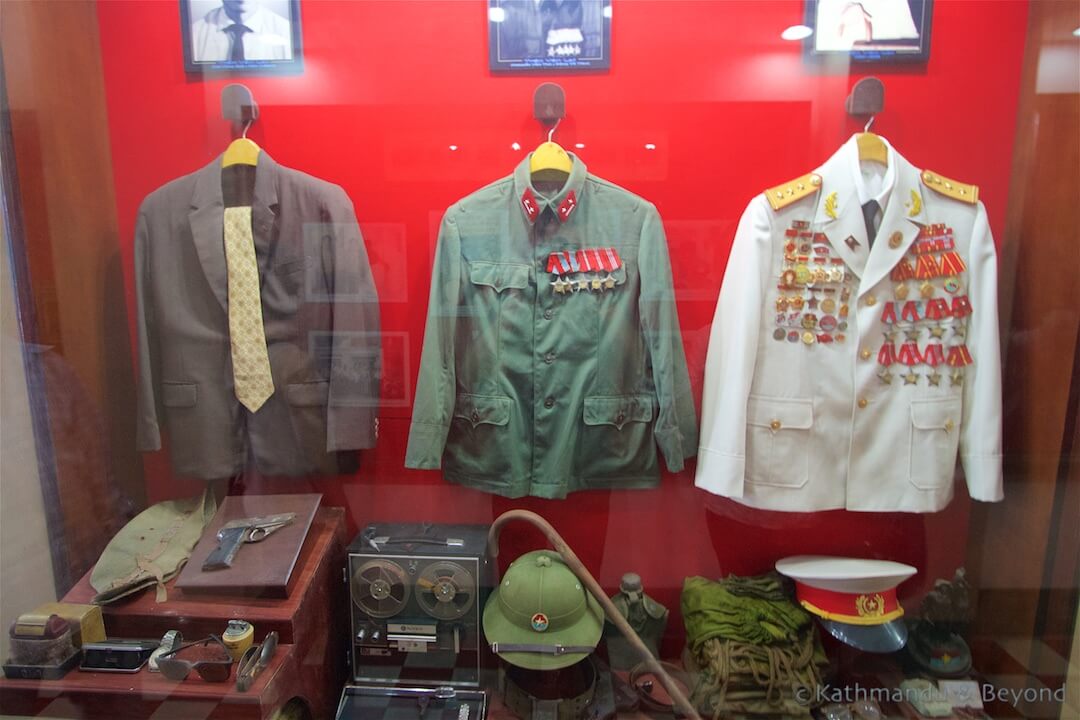
Secret Weapons Hiding Place Museum
This little museum is centrally located in District 3 but makes no effort to advertise itself. In fact, if you do want to visit, you officially need to call ahead and arrange a fixed time of arrival. We didn’t make an appointment and just turned up on the off chance and as luck would have it, a Vietnamese group were looking around and we were allowed to do the same without any problems.
Pho Binh (Peace Noodle Shop)
At first glance Pho Binh, or Peace Noodle Shop as it is also known, looks like any other noodle shop found in the city but the difference with this one is that it has an interesting history attached to it. Pho Ninh was a former secret headquarters of high-ranking Viet Cong personal. Among other things, from here they planned the Saigon section of the 1968 TET Offensive, one of the largest military campaigns of the war and a major turning point of the entire conflict.
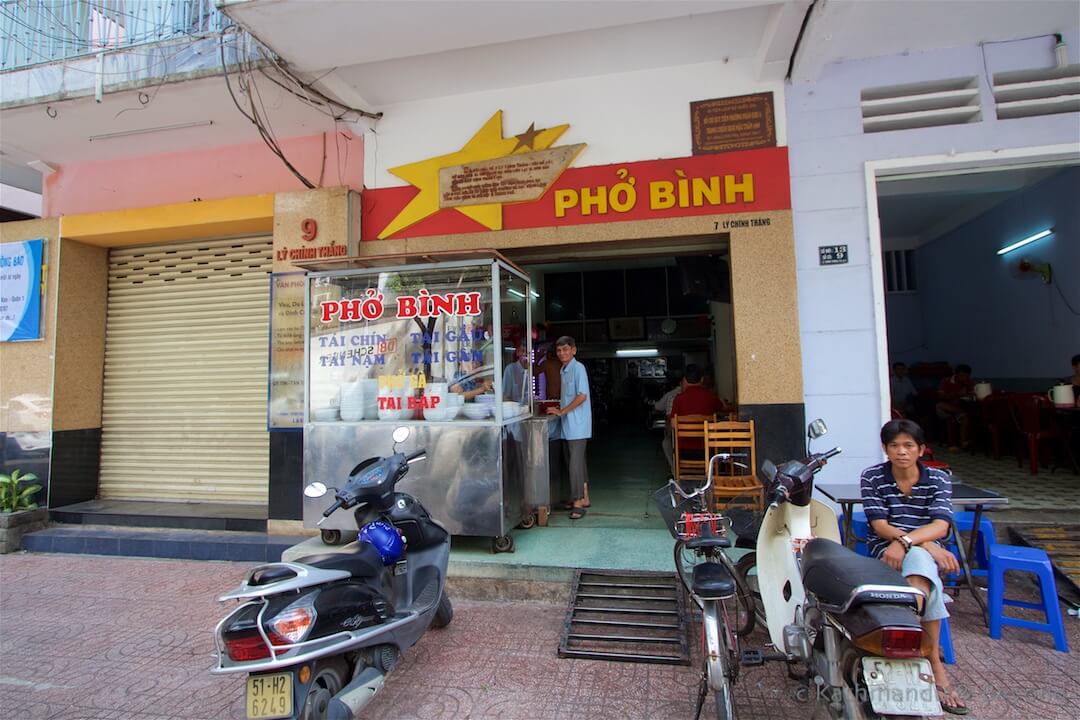
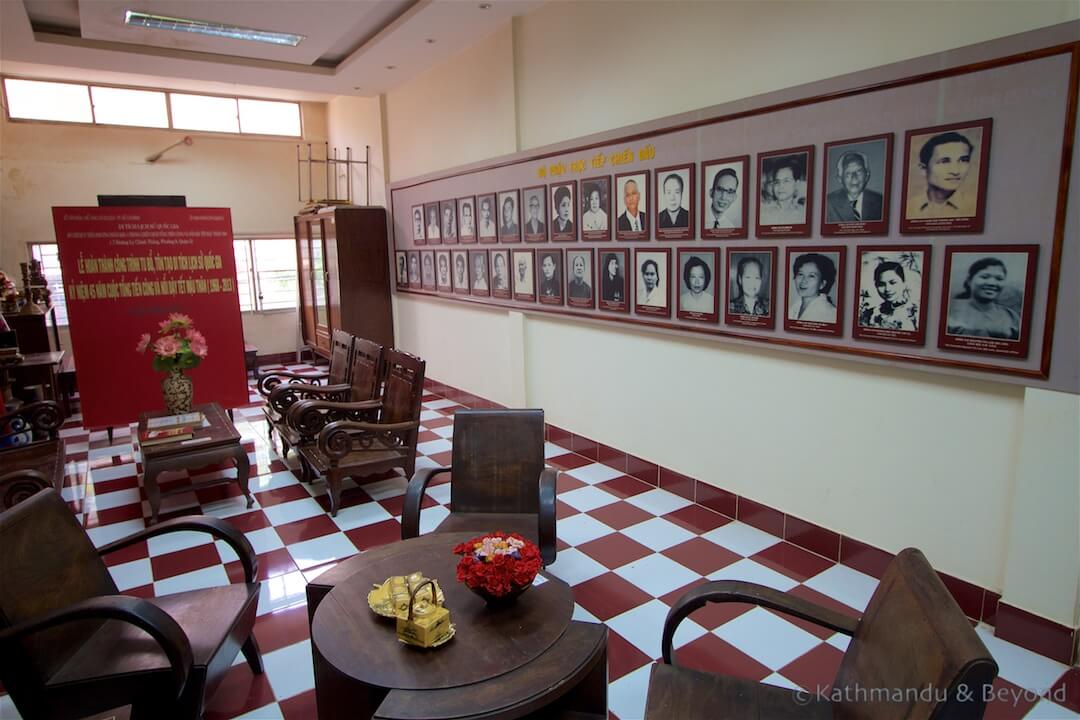
Pho Binh (Peace Noodle Shop)
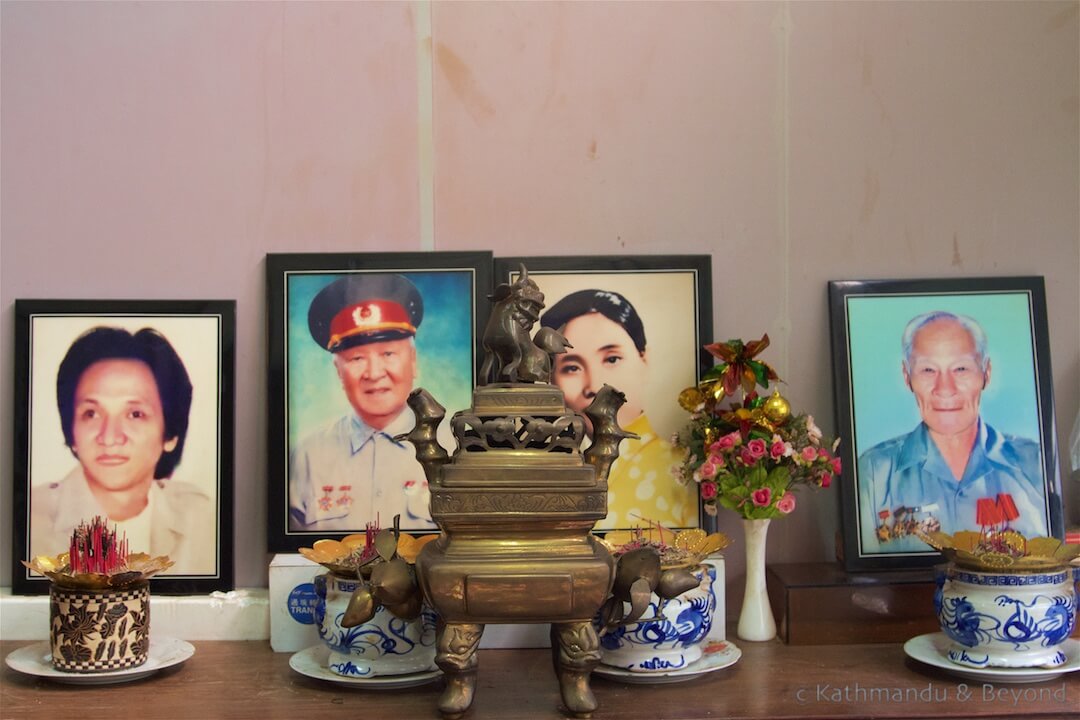
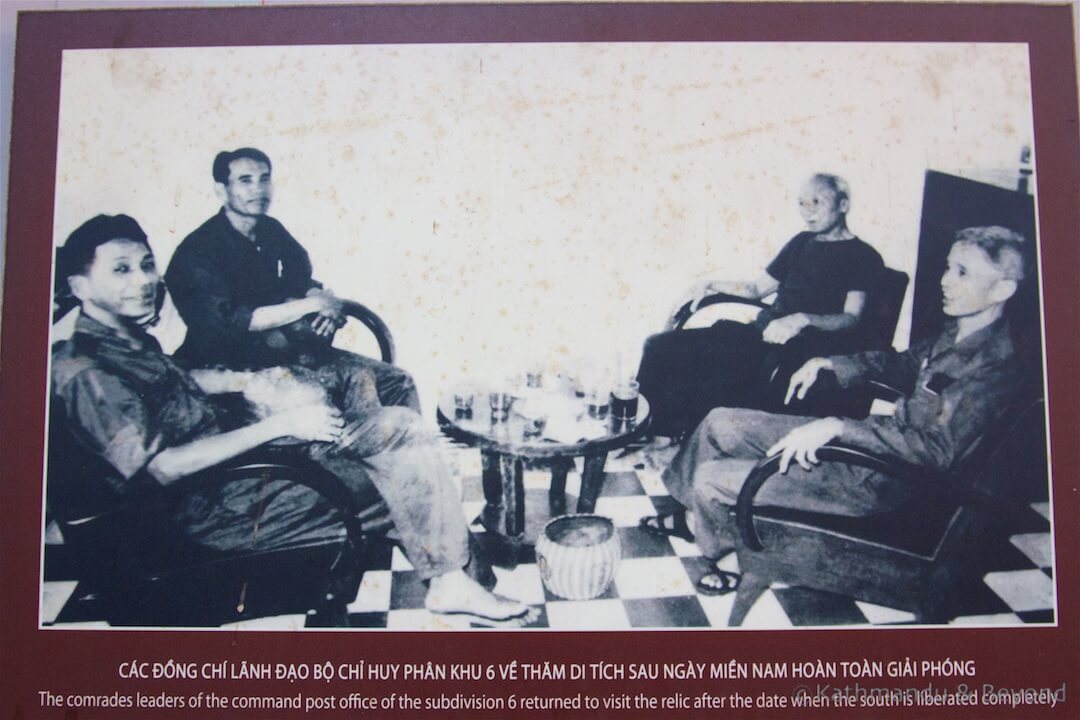
Pho Binh (Peace Noodle Shop)
During the Vietnam War, the noodle shop was owned by Mr Ngo Van Toai (*), a communist supporter who purchased the shop with funds provided by the Viet Cong. Upstairs, directly above the restaurant, a medium-size museum-like room exists. For a small fee (and of course the purchase of a marginally over-priced bowl of noodles), a friendly staff member, who speaks a little English and some French, will show you around. Inside the room, you will find original period furniture and a number of mounted photographs of family members and Viet Cong associates. Descriptions are in English and there is also a small ancestor shrine dedicated to family members and an impressive cabinet full of medals.
(*) The noodle shop is still owned by family members.
The noodle shop is located at 7 Ly Chin Thang Street.
Xa Loi Pagoda and St. Francis Xavier Catholic Church
This rather bland-looking pagoda is of interest more for its historic value rather than its architectural properties. Built in 1956, the pagoda was the headquarters of Buddhism in South Vietnam (*) and this made it a target for President Diem who, as mentioned earlier, was a staunch Catholic. In August 1963, under the command of Diem’s brother, Ngo Dinh Nhu, truckloads of Special Forces and combat police attacked the temple and arrested several hundred monks and nuns. The raid was instigated by Diem in response to Vietnamese Buddhists’ protests for civil rights in the face of religious persecution. However, the attack created an even stronger union of Buddhists against the Diem regime and was ultimately a crucial factor in the American’s decision to support a coup against the despotic leader. Diem and his brother eventually met their demise a few months later after a successful coup d’état. They were discovered hiding in St. Francis Xavier Catholic Church (Cha Tam Catholic Church), which is located in nearby Cholon (China Town), and assassinated.
(*) Xa Loi remains the largest pagoda in Ho Chi Minh

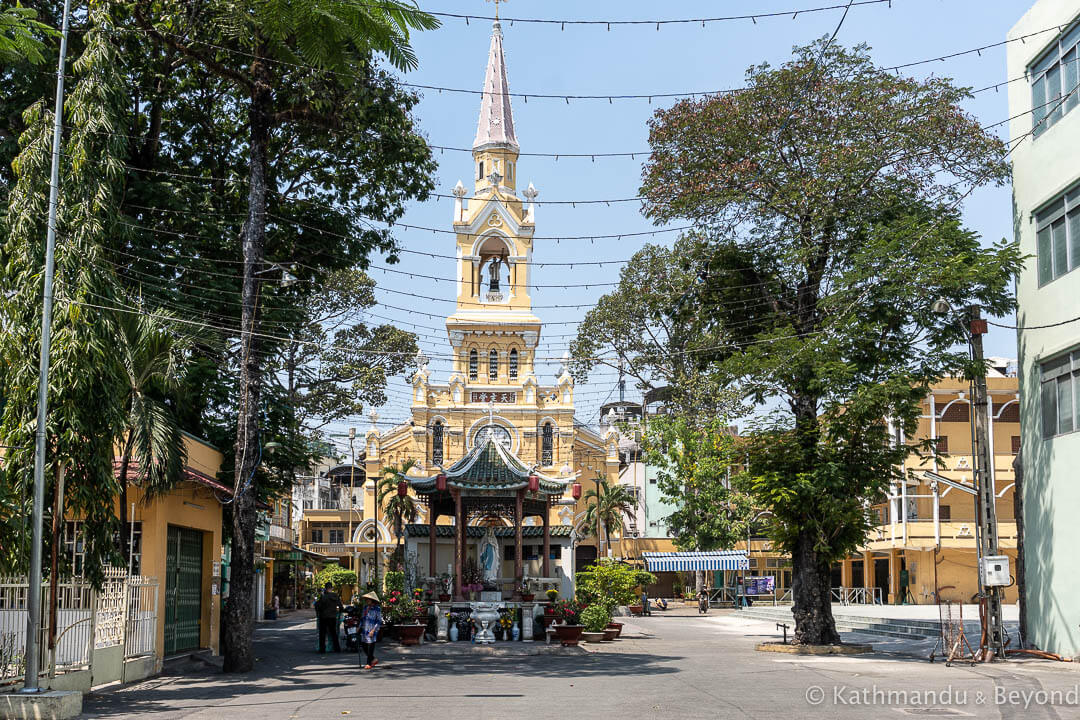
Xa Loi Pagoda (left) and St. Francis Xavier Catholic Church (right)
Located in District 3, Xa Loi pagoda is a short walk from Venerable Thich Quang Duc Memorial. St. Francis Xavier Catholic Church is located approximately 500 metres east of Cholon’s main bus terminal.
MARKETS AND GALLERIES
Dan Sinh Market (War Surplus Market)
The American Army left an unimaginable amount of hardware, equipment, and gear in Vietnam at the end of the war. Most of the hardware (tanks etc.) were scavenged and either recycled or sold as scrap metal, but much of the equipment and personal possessions that once belonged to soldiers ended up in markets such as Dan Sinh. During the 1980s most of the clothing, helmets, boots, water canisters etc. that could be found in the markets were genuine but this diminished with time and when I visited Dan Sinh market in 1992, the authenticity of such items was already in question. Nowadays it is safe to say that at least 95% of what is on sale is a replica. Rather morbidly, back then dog tags were a popular choice for souvenir hunters, along with engraved Zippo lighters.
These lighters were very interesting. Many were engraved with a battle cry or the motto of the unit. Some were engraved with witty slogans and others with political messages. Examples include Hired killer for LBJ, Death from above and When I die bury me face down so the whole world can kiss my ass.
I remember buying a lighter in 1992 and being convinced it was genuine. I had no idea if it was or not as the market traders would deliberately batter and scratch the lighters to make them look old. You can still find military objects for sale in Dan Sinh Market and you will still be told that what you are purchasing is genuine, but there is definitely less interest these days and the market itself trades more in building materials and tools than it does Vietnam War memorabilia.
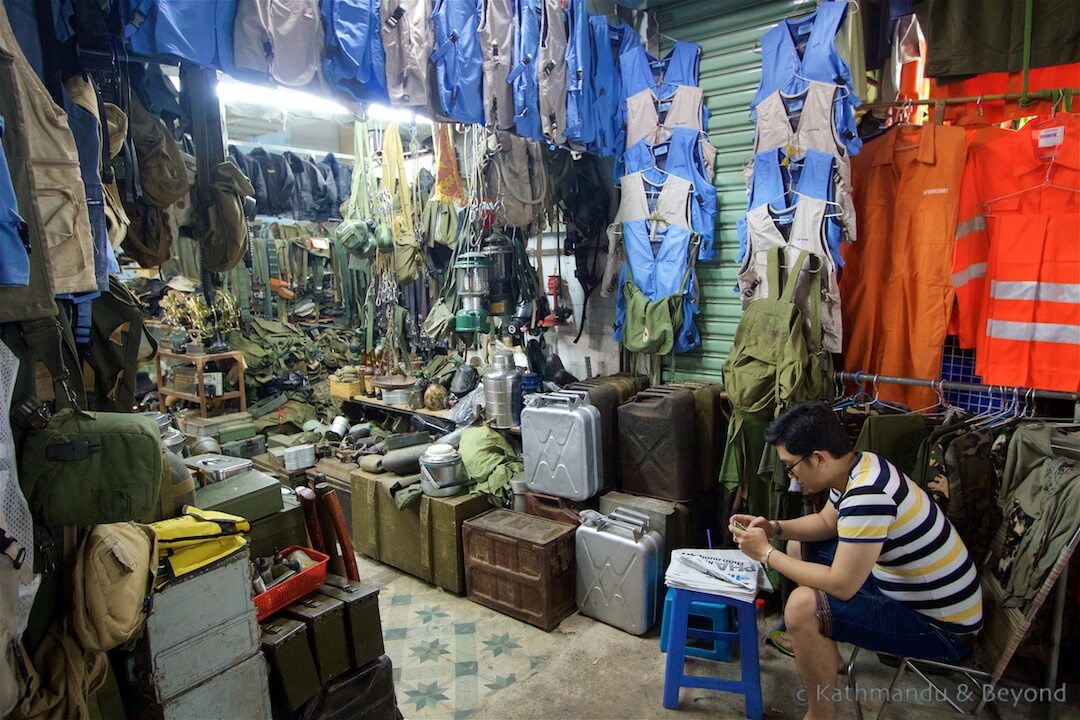
Dan Sinh Market
The market is located in District 1, about 750 metres southwest of Ben Thanh market.
Lotus Gallery
A short walk from the Caravelle Hotel (heading towards the Saigon River), Lotus Gallery is reportedly the only place in the city where you can buy genuine Propaganda Art (*). Original artwork sells for approximately US$150 per item and I am assuming there is room for negotiation. Apparently, the owner buys the art at intermittent auctions held by the government who apparently still have a stockpile of it. The small gallery also sells reproduction art for around US$6 and upwards per piece.
(*) There is at least one more shop selling Propaganda Art in the city. We visited an establishment on Bui Vien Street (the heart of the backpackers’ district), where the salesman quoted US$30 for genuine art. Either Lotus Gallery is seriously ripping people off or the guy on Bui Vien Street wasn’t telling the truth. I suspect the latter.
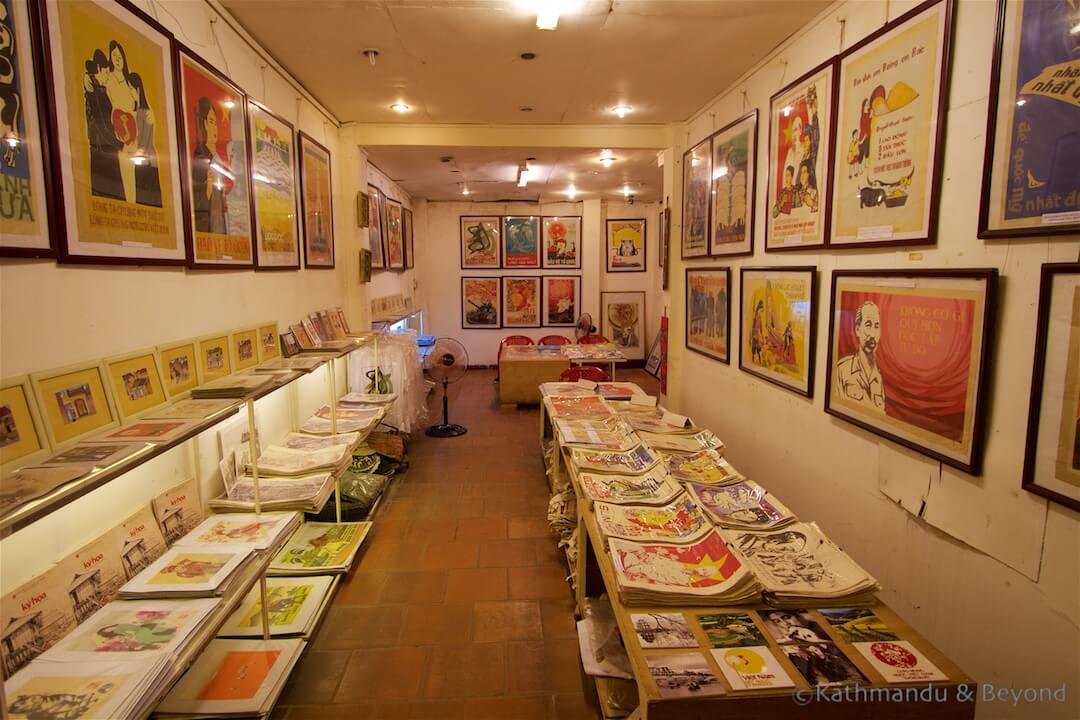
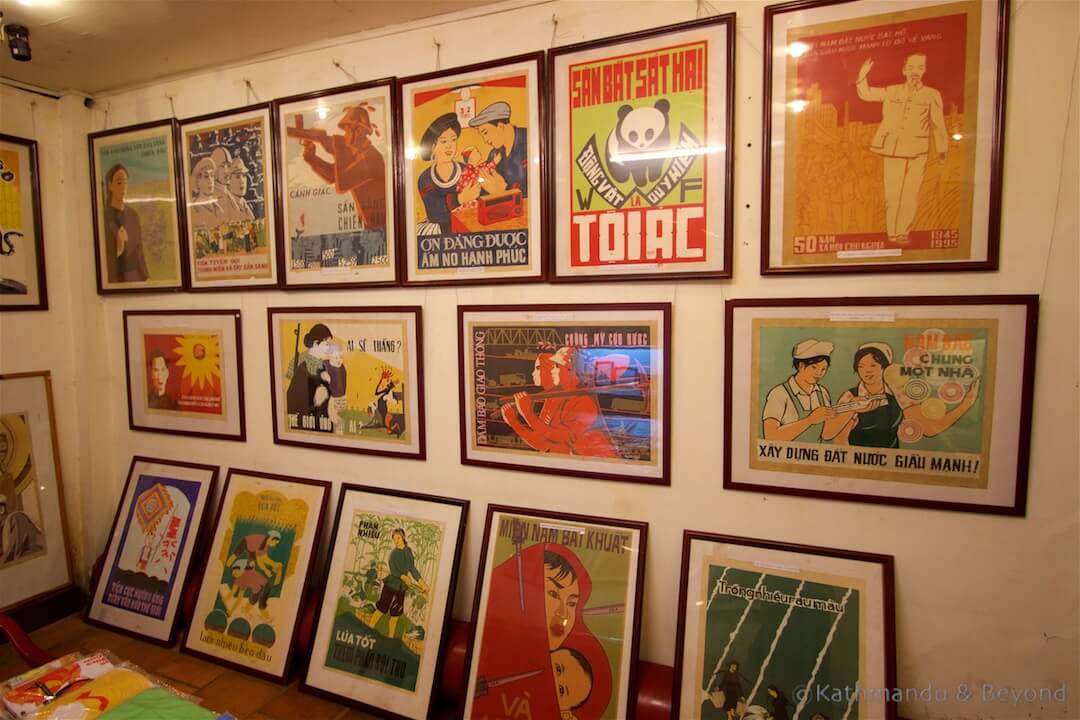
Lotus Gallery
Additional photographs included in this post are courtesy of Wikimedia Commons and are public domain images.
CLICK HERE TO READ MORE POSTS FEATURING VIETNAM
IF YOU ENJOY THIS POST AND ARE INTERESTED IN VISITING THE VIETNAM WAR SITES IN SAIGON, PLEASE SHARE IT…
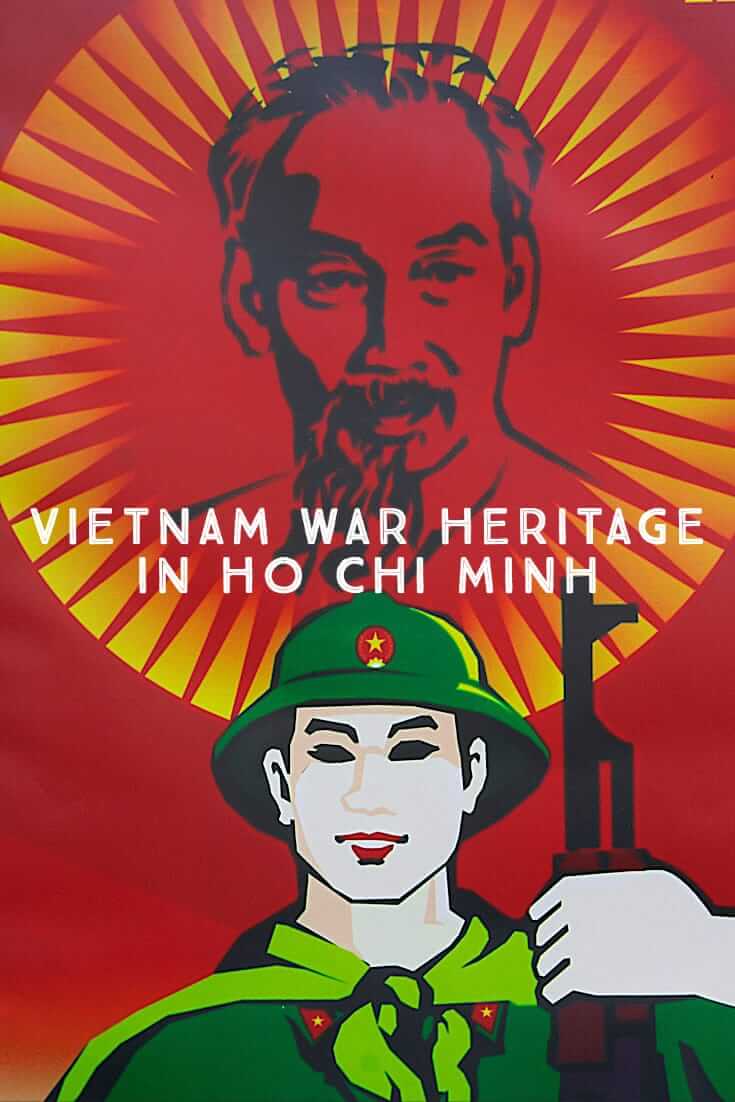
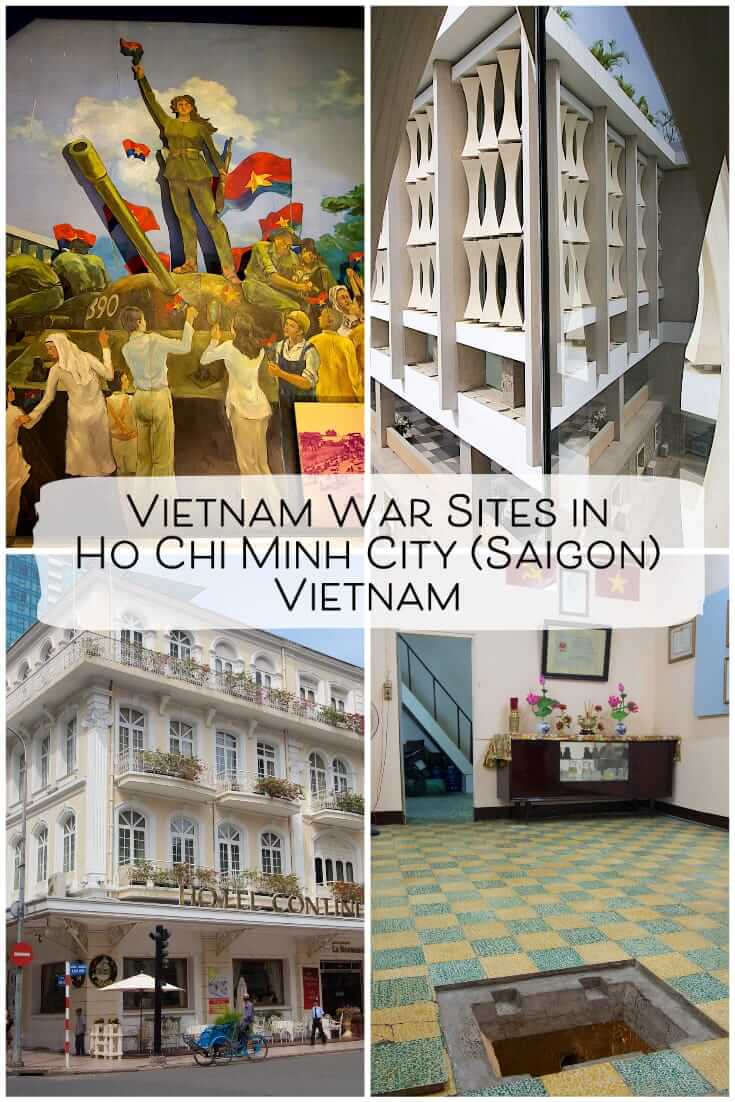
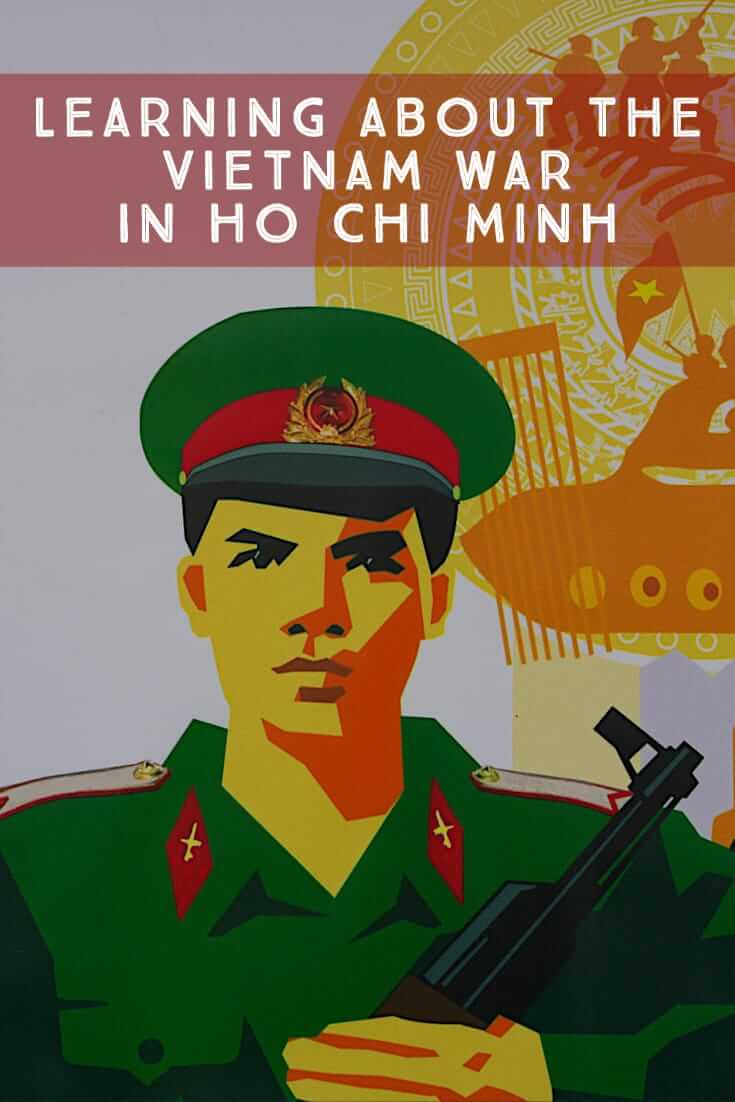

Very interesting, though I’m pretty sure no American would engrave “kiss my arse” on a zippo lighter, or anything else. “Kiss my ass,” certainly, but not “kiss my arse.”
Haha! On closer inspection of the photographs, you’re right! Post duly corrected.
Oh, and Mark says you’re a smart-ass/arse for spotting his mistake! 😉
I find this very interesting and I love the addition of old photos. I’ve seen so many movies from those days, it was ugly but there was also so much intrigued and behind the scenes stuff.
I also always find it interesting seeing the propaganda and artifacts from the time. We’ve seen so much of that in Eastern Europe as well and it’s so specific so a certain time.
I guess you have to appreciate history.
Vietnam is a place I’ve yet to go. But it’s on my list.
2 months! I’ll make sure to contact you with any questions if/when we go.
Frank (bbqboy)
Thanks Frank, I enjoyed researching and writing this post. We were working in Saigon Monday to Friday for two months and if we didn’t go away at the weekend, we would spend our time heading off to find the places mentioned above. I studied the Vietnam War as part of my history A level (not sure if you have A levels in the States!!) when I was 18 years old and have retained the interest in the subject. Do I take it you are heading to Vietnam in two months time or you intend to spend two months there – either way please feel free to contact us if you have any questions. The north of the country is very different from the south. It’s not a country that I liked instantly but it certainly grows on you the longer you spend there. Anywhere with beer for US$0.50 a bottle gets my vote!
This is such a sad topic. I usually avoid sightseeing like this. When I was in Cambodia I did not go to the memorial and museum of the Khmer Rouge terror. I guess I’m just afraid.
Well, unfortunately history isn’t always happy! I do feel that learning about the history of a place either before or whilst you are travelling there is very important. The past can shape the people, their psyche and culture of a country and sometimes you need to learn about past atrocities in order to understand what you are seeing and experiencing today!
I know so little about what happened in this part of the world, so thank you for sharing and educating… As someone commented before, I also tend to avoid visiting sad places during my trips and focus on positive aspects. I did visit Auschwitz a few years ago and it still gives me shivers down my spine when I think of it. 🙁
I totally understand why people avoid visiting such places, however as I said above, I do believe that learning about the culture and history of a destination is very important. Even if it’s hard to take.
Very detailed and informative article. I compared with what I have seen in Hanoi. Have not been in Ho Chi Minh yet.Thanks for sharing.
You’re welcome and I’m glad you found the article interesting.
The Newseum in DC had an exhibit on Pulitzer-prize winning photographs, and there was one that I will never forget – the little 9 year old girl running after being hit with Napalm in South Vietnam. You never really hear what it was like in Vietnam during the war – seems like so much was going on all at the same time.
I was never a fan of history in college, only because a lot of it was so grim and despicable, but thank you for such a detailed post.
That’s certainly one of the most iconic photographs of the time. It’s one I don’t think anyone will ever forget. I also wasn’t big into history at school but find I now learn so much more history through travelling.
Wow, what an in-depth post – I know of it as the Vietnam War, and know people that served during that time, but never knew of the political climate in Vietnam itself. It’s so eye-opening.
Thanks for reading and glad you enjoyed the post.
I think if I showed my parents this post and pictures, they would start tearing up. They lived through it all and I spent 11 years in Vietnam so I know the history. Coming back later this year to be a tourist 🙂
I can’t even begin to imagine what it is like to live through something like this, even after talking to many people who have. It hits hardest with me when I meet people my age and hear what they went through when they were so young. Enjoy your trip later this year. 🙂
I am in Saigon at the moment. I found your information both very interesting and,more importantly,accurate. I,too,always thought that the famous evacuation shot was of the roof of the embassy. I am also impressed that there are more small niches of history still around such as the forgotten cellars. Thanks for the tips and I will definitely be be doing an exploration based on your reserach.Thanks very much.
Thank you so much for the feedback Mark. It’s great to know that the information in this post has been helpful. If you find anything to add to the list while you are out exploring Saigon, I would love hear about it!
I was able to access the building formerly known as the Pittman Apartments, in December 2017. Rode the elevator up, poked around the roof, walked down the stairs. However nondescript it may be, the experience was a real highlight of my trip.
Thanks for commenting Ted and as you say, the building is nondescript but extremely fascinating to visit. I was surprised to find people living on the roof also!
It’s not Thích Quảng Đức on the photo, it is another burning monk
His name is Đại Đức THÍCH THIỆN MỸ
Well spotted. Thank you, we’ve updated the image.